HIDDEN FIGURES


A new campaign aims to improve the quality of life for FM’s ‘hidden workforce’





















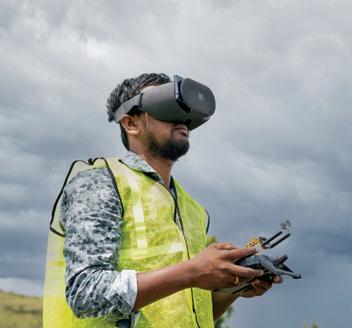

FACILITIES MANAGEMENT JOURNAL VOLUME 31 | 03 MARCH 2023 SECURITY New Access Control Standards BUILDING FABRIC AI drones in action 40 32 CASE STUDY BIM benefits 24 O cial magazine FM Clinic: What impact could the Government’s strategy have on FM procurement?



















*Best et al, J Hosp Infection, 2014 (comparing jet air, warm air dryers, and paper towels). Jet air dryers spread 10x more bacteria. * Make the smart choice and help prevent the spread of washroom germs. Yuck. Discover why Tork® paper hand towels are better for your business now. tork.co.uk/smartchoice or tork.ie/smartchoice
kpm media Unit 1 Mill Place, Platt Business Estate, Maidstone Road, Sevenoaks, Kent TN15 8TB Tel: 01322 662289
Editor Sara Bean sara.bean@kpmmedia.co.uk
Assistant Editor & Social Media Development
Sarah O’Beirne sarah.obeirne@kpmmedia.co.uk Tel: 01322 476815
Director & Designer Warren Knight warren.knight@kpmmedia.co.uk Mob: 0780 1947757
Sales Director Danny Grange danny.grange@kpmmedia.co.uk Mob: 07867 418994
Business Administrator Sami Smith sami@kpmmedia.co.uk
Accounts Trish Boakes accounts@kpmmedia.co.uk Group CEO Nigel Copp nigel.copp@kpmgroup.co.uk
Editorial steering committee
Alan Hutchinson, Facilities Director, Howard Kennedy LLP
Charles Siddons, Head of Operations, NHS Property Services
Darren Miller, NBCUniversal, VP for International Workplace, Facilities & Real Estate
Ian Wade, Head of UK Estates, British Medical Association
Lucy Hind, Senior FM Lecturer, Leeds Beckett University
Marie Johnson, Head of Workplace & Wellbeing, Nominet

Russell Wood, Facilities Manager at Dentsu Aegis Network
Russell Burnaby, Head of FM, Regeneration and Environment, Brent Council
Simon Francis, Director of Estates and Facilities, The Institute of Cancer Research
Simone Fenton-Jarvis, Group Director of Workplace Consultancy and Transformation, Vpod Solutions
Stephen Bursi, Facilities Lead, BAE Systems
Wayne Young, Facilities Manager Just East Takeaway.com
SUPPORTED BY
10,682 July 2021 to June 2022

kpm media adopts a sustainable policy of using paper from managed forests. Printed in the UK by The Gemini Print Group www.gemini-print.co.uk
© Copyright 2023 kpm media
The publisher does not necessarily agree with the views and opinions expressed by contributors. No material may be reproduced in part or whole without written permission from the editor. Editorial contributions are accepted on an all-rights basis only. Letters to the editor may be published in their entirety or in edited form and remain the property of kpm media. While due care is taken to ensure the accuracy of information contained in this magazine, the publishers cannot be held responsible for any errors in editorial articles or advertisements. Subscriptions are available to non-qualifying and overseas readers at £120 p.a. (UK), £160 p.a. (EU countries) and £240 p.a. (overseas-other).
The FM sector enthusiastically acknowledged the crucial role played by cleaners, security and maintenance people during the pandemic and there are those committed to keeping the momentum going.
The British Cleaning Council and the All-Party Parliamentary Group (APPG) for the Cleaning and Hygiene Industry have been pushing hard for more recognition for cleaners, while a new report highlights the challenges for cleaners and their counterparts in other essential roles. The report www.instituteofhealthequity.org/resourcesreports/working-well-delivering-better-health-outcomesfor-hidden-workers which we discuss in the interview with Mark Tyson from LGIM Real Assets [page 36] delves behind the scenes of the shiny o ices which house the knowledge workers of the 21st century to uncover a startling, somewhat more Victorian picture.
A quarter of these ‘hidden workers’ toil for 11 hours or more a day, with the majority of those surveyed saying their work a ects both their physical and mental health. Yet many do not receive pay if they attend a hospital, GP or other health appointment and as most work anti-social hours that either start before 7am or finish a er 7pm, the result is that almost everyone interviewed felt that they did not get enough sleep.
As the report reveals, in a sector which promotes wellbeing, sustainability and making a positive contribution to society, some of its most vulnerable workers are getting a raw deal. But FMs are also in a unique position to do something directly about it. Via consultation with its supply chain partners, L&G has committed to o er sick pay, access to virtual healthcare services and death in service benefits.

They are also, as Tyson explains, determined to encourage FM providers and their supply chains to implement similar standards across their workforces. We’ll continue to report on the progress Tyson and the campaign make over the coming months to help significantly improve the quality of hidden workers lives.
As always, we’d welcome your feedback about any aspect of the magazine, together with your insight into what’s happening in the FM sector.
sara.bean@kpmmedia.co.uk
MARCH 2023 3 FMJ.CO.UK
comment
this month...
Average Net Circulation
Total
FACILITIES MANAGEMENT JOURNAL JOBS Find your next role with the FMJ Jobboard Visit jobs.fmj.co.uk for hundreds of roles in FM and associated industries jobs. fmj.co.uk EDITORIAL COMMENT


















Complete Generator and UPS Solutions from are available UK-Wide and via Export. supports all your preventative back-up power needs in the UK. WHEN FAILURE IS N OT A N O P T I O N The Generator & UPS Experts Generator & UPS Sales: 01977 688 155 yorpower.com Generator & UPS Maintenance & Repair: 0345 200 9888 ppspower.com
NEWS & ANALYSIS
FMJ NEWS

06
THIS MONTH...
FEATURES
This month’s summary of everything that has hit the headlines in the FM sector.
ASSOCIATION NEWS


08
The latest news and views from RICS and IWFM.






EVENT REPORT
10 The theme for this year’s Workplace Futures Conference was Technology in the workplace: beyond the information age.
ADVICE AND OPINION
16
COMMENT
CASE STUDY
24 Paul McCarthy, CTO at Service Works Global explores the benefits of digitalisation in the built environment and o ers advice on how FMs can start the digital journey; as illustrated by two case studies.
SOFTWARE

28 Going digital can be a game changer for FM suppliers and their clients. Richard Warley, CEO of BigChange explains how digitisation is about more than just e iciency.
30 Technology is constantly evolving. Richard Harris of Okappy reviews the most significant technological changes that took place in 2022 and what FMs should look out for in 2023.

BUILDING FABRIC
32
An increase in tall buildings presents a huge challenge for traditional fabric maintenance methods. AI can help transform the process says Stefano Bensi of So Bank Robotics.


ERGONOMICS
34 Richard Guy with three steps to transition your organisation to ergonomic sit-stand furniture.
INTERVIEW
36
Sara Bean talks to Mark Tyson, Head of Property Operations at LGIM Real Assets on ways the real estate industry can address a health and wellbeing gap amongst UK workers.
SECURITY
40 Matthew Holliday of the NSI says a revised Code of Practice for access control systems provides valuable reassurance for FMs.
DIGITAL SECURITY
42 Analysts are calling this the ‘golden age of ransomware’ – and it’s time for businesses to fight back says John Michael, CEO, iStorage.
HEALTH & SAFETY
12
Why is there no Earthshot category for the Built Environment? Mitakshi Sirsi and William Poole-Wilson discuss ways the architecture and design community can improve sustainable outcomes in the built environment
COMPLIANCE
14
A new wave of regulations for lighting means fluorescent lamps will be banned in the UK from September 2023 says Kevan Shaw.
FAST FACTS
FM CAREERS 53
PEOPLE
51 Find out who’s moving where in the facilities management profession.
16
Technologies which enable businessgenerated power can reduce costs, lower emissions and increase energy security, says Anthony Ainsworth of npower Business Solutions.

BLOG & SOCIAL MEDIA

RECRUITMENT
52
Alan Stenson, CEO of Neutral Carbon Zone believes the FM industry has a crucial role to play in reducing our global carbon footprint and achieving a net zero future.
18
FM CLINIC
If we as an industry can create more happiness for our people, we will inspire them to create happier workplace experiences for customers explains David Tarbuck on the reasons for an Atlas employee’s survey
TRAINING
You’ll never regret investing in knowledge and skills. Sofie Hooper and Daniel Biggs of IWFM explore the development pathways.
53
The Government’s FM Strategy aims to address the quality of service in the procurement of FM contracts. We ask what impact this initiative could have on FM procurement.
20
CAREERS NEWS
54
A brief roundup of the latest careers news in the facilities management sector.

44
An increasing number of people working remotely means safeguarding employees has become a greater challenge says David Rowan of Chubb.
MIFM
45
New product and service launches and company news from the FM industry.







Next Edition
Digital technology is increasingly being used to support hybrid working patterns and is designed to help organisations easily display, share, communicate, and bring people together. We look at the latest digital tools, including some working examples of tech in action. A cross section of washroom services, technology and consumables suppliers o er advice on how to balance sustainability with a guarantee of exemplary hygiene standards. With heating and cooling accounting for almost 50 per cent of a building’s energy consumption, heat pumps could become an essential ally in achieving a decarbonised future; and we’ve an update on the Electric Vehicle (EV) charging network. And as the Facilities Show returns to London’s ExCel we preview the highlights of the event.
sara.bean@kpmmedia.co.uk
To register for your free copy of FMJ visit fmj.co.uk
MARCH 2023 5 FMJ.CO.UK
32
CONTENTS Follow us on Facebook and Twitter @FMJtoday
LEGAL VIEW INQUIRY INTO ENVIRONMENTAL REGULATIONS LAUNCHED BY THE BUILT ENVIRONMENT COMMITTEE






EPR EXPLAINED: WHAT EXTENDED PRODUCER RESPONSIBILITY MEANS FOR YOUR BUSINESS IN 2023
David
Meehan
-
General Manager of Biffa’s compliance team, Biffpack
Being introduced in the UK in 2024, Extended Producer Responsibility (EPR) is a policy holding producers responsible for the collection, sorting, recycling, or disposal of their product packaging. This new policy means it will soon be down to businesses to fund the total cost of managing household product packaging from production to disposal.
Household packaging is defined as anything that may be removed from a household, including large bulky packaging from white goods in addition to smaller everyday grocery packaging.
The policy - designed to transfer the annual £1.7 billion financial burden of household packaging waste collection from taxpayers to producers - aims to generate accountability across waste streams, plus encourage and empower brands to think more sustainably about their packaging life-cycle post-purchase.
Where historically, the responsibility has sat with a small group of around 8,000 compliant producers, now the responsibility will be spread further to include a greater number of smaller producers.
Which businesses are impacted?
Any business that handles over 25 tonnes of packaging in a year will be affected by EPR legislation. Whether your business purchases packaging for products or you are producing packaging to sell to other businesses, if you handle over 25 tonnes per year, you are identified as a ‘producer’ and must act now. The Department for Environment, Food & Rural Affairs (DEFRA) has also released an online obligation checker to help businesses understand if they are affected by the new legislation.
How businesses will be affected

The scheme is set to impact smaller and bigger businesses differently. Smaller organisations with a turnover between £1 million and £2 million and handling 25-50 tonnes of packaging in a calendar year will have to provide detailed reporting on the packaging they produce and how the waste will be managed. Larger businesses with a turnover above £2 million handling more than 50 tonnes of packaging per year will have to cover the cost of EPR and report their data every six months.
The collection of this data must begin from January 2023 to create a full calendar year of data, with the first six months due for submission between July and October 2023 for large organisations or between January and April 2024 for small organisations. Due to the lower threshold introduced by EPR, there will be lots of newly affected businesses in the UK that will need to review their reporting processes and make changes to start capturing data.
For the first year, companies will have to report on aluminium, steel, glass, wood, plastic, paper, cardboard, fibre-based composites and other materials like industrially biodegradable packaging. Additional reporting requirements will be introduced as time goes on. For example, from January 2023, a business may only need to report a plastic bottle as a 10g clear plastic bottle. But as EPR progresses, they will need to break down each plastic type used to make that bottle so that it can be recycled more effectively.

In short, the legislation will increasingly favour recyclable materials - the easier packaging is to reuse or recycle, the lower the cost to producers. Higher volumes of waste created by packaging choices will increase costs. Ultimately, the best way to prepare for EPR is to ensure you have a thorough understanding of the recyclable potential of the packaging you handle. Then, use the reporting data you collect this year to pre-empt costs and plan more sustainable solutions for your packaging. Preparation is key, and it’s essential to report in October the product packaging used since January.
There will be systems available to help with the EPR transition. DEFRA is developing a calculator to help businesses estimate how much EPR will cost them individually. The Government is also offering help via a thirdparty compliance scheme. This allows a third party to help you register and report your data if needed.
There’s real merit in EPR. It will benefit the circular economy by incentivising businesses to recycle more. It encourages greater use of highly recycled and durable materials, which should spark a mindset shift from ‘produce to dispose’ to ‘produce to reuse’.
The House of Lords Built Environment Committee has launched an inquiry into the impact of environmental regulations on development and has issued a call for written submissions.
The Government has set out, through primary and secondary legislation, a number of environmental requirements for development of the built environment. This has resulted in a framework of environmental protection for development in England which is largely administered through the planning system. Examples of such regulations include those on biodiversity net gain, nutrient neutrality, habitats and air quality.
This inquiry will assess the governance, the associated costs for developers and promoters, and the impact on the delivery of projects, of nationally defined environmental regulations in England. The Committee is aware of new requirements in the Environment Act 2021 and wishes to ensure that the implementation of these draws on lessons to date. The Committee’s focus is on England, as most relevant matters are devolved in Northern Ireland, Scotland and Wales.
This cross-party committee was appointed in 2021 to consider housing, planning, transport and infrastructure. It is chaired by Lord Moylan.
The deadline for the submission of written evidence is 31 March 2023.

To read the call for evidence and to find out how to submit evidence visit https://bit.ly/3ZgYsnW
NEW TASKFORCE CAN UNLOCK £1 TRILLION ENERGY EFFICIENCY MARKET

The Building Engineering Services Association (BESA) has praised the government for launching an energy e iciency taskforce charged with driving investment in improving the performance of buildings.


Co-chaired by the Chief Executive of Nat West, Alison Rose, and Energy Security and Net Zero Minister Lord Callanan, the taskforce will devise a plan to cut energy consumption in domestic, commercial, and industrial buildings by 15 per cent by 2030 compared with 2021 levels.
The government is putting a total of £12.6 billion behind the plan this decade – £6.6 billion allocated during this Parliament and the rest from 2025. Chancellor Jeremy Hunt believes energy e iciency could be worth £1 trillion to UK businesses between now and 2030, and emphasised its importance to energy security, economic growth, and the delivery of net zero.
BESA said that energy e iciency measures could be rapidly scaled up through a national programme of building retrofits, which would put the built environment at the heart of economic growth and the government’s net zero targets.
However, it urged the taskforce to make training and recruitment a key focus for investment to address the ‘green skills gap’ that could undermine the strategy.
BESA’s Technical Director Graeme Fox said: “The building engineering sector will be pivotal to delivering energy e iciency improvements, but we need help to develop a skilled workforce capable of keeping pace with government targets. For example, the target is for 600,000 heat pump installations a year by 2028 which is about 10 times what we are doing now. We need lots more people, but those people need to have the right skills so there needs to be a huge jump in spending on training and recruitment.
“The energy e iciency taskforce could really help by making it part of their strategic plan to ensure a flow of investment into promoting the sector and underpinning green training programmes.”
MARCH 2023 6
NEWS & ANALYSIS FMJ.CO.UK
Cleaning and hygiene industry urged to join campaign to make the sector a national priority
The cleaning, hygiene and waste industry has come together to issue a call for sector staff to ‘speak up’ for their industry and help lobby MPs and sign a petition to make cleaning and hygiene a national priority.
The British Cleaning Council and 22 associations from across the industry are frustrated by the lack of interest from MPs (except for Chairman Nigel Mills MP) and political parties in the report by the AllParty Parliamentary Group (APPG) for the Cleaning and Hygiene Industry, entitled Embedding Effective Hygiene for a Resilient UK.
The report’s recommendations, if implemented, would put cleaning and hygiene at the heart of the national agenda, making the nation much more resilient to current common infections and also much better prepared for future public health emergencies, like the COVID-19 pandemic.
Members of the industry are being asked to download and adapt a pre-written letter highlighting the issue to email to their local MP, and also to sign a petition, both calling on the Government to implement the report recommendations in full. People can visit https:// britishcleaningcouncil. org/2023/02/06/downloadletter-here/ to find the letter and petition and find details of their local MP on the BCC website.
Since the APPG inquiry was first established last autumn, the BCC has sought extensively to engage MPs and the Government about the report with little response so far. The BCC is now calling for the entire industry to back the drive to promote the APPG report to Government via the nation’s MPs.
LOCAL AUTHORITIES MUST DECARBONISE PUBLIC BUILDINGS ‘FIVE TIMES FASTER’ TO MEET NET ZERO TARGETS
DATES FOR THE FM DIARY

16-18 MAY 2023 www.facilitiesshow.com
07-09 MARCH 2023
Futurebuild ExCeL, London https://www.futurebuild.co.uk/

14-16 MARCH 2023
The Cleaning Show 2023 ExCeL, London https://cleaningshow.co.uk/london
15-16 MARCH 2023
TheUK government is currently missing one of its core Net Zero commitments to reduce CO2 emissions by 101 years, according to the Public Building Energy E iciency Report.
CO2 emissions from public buildings need to be reduced five times faster than they’re currently falling to meet the target of ‘75 per cent reduction in CO2 emissions by 2037’. The report projects that nine out of 10 (91 per cent) public buildings will need upgrading in the next seven years if they’re to meet net zero targets.

The report, conducted by network service provider, Neos Networks, examined the actual energy usage and e iciency of over 450,000 public buildings in England and Wales. It analysed their display energy certificates (DECs) and ‘operational ratings’ (annual CO2 emission kg per m2), and highlighted the areas requiring immediate action and major investment in retrofitting public building stock.
On average across England and Wales, CO2 emissions per m2 have fallen by 0.62 per cent annually over the last 15 years. An annual reduction of 3.75 per cent is needed to achieve the core goal of a 75 per cent reduction in CO2 emissions by 2037, compared to the 2017 benchmark as outlined in the UK governments ‘Net Zero’ and ‘heat and buildings’ strategies. However, there is a mixed picture across the local authorities. Public buildings in a third (32 per cent) of local authorities have seen an increase in their CO2 emissions per m2. In some areas, operational rating emissions have risen by over 70 per cent.
By contrast, more than two-thirds (68 per cent) of local authorities brought emissions down. Merthyr Tydfil (-68.20 per cent), East Hertfordshire (-54.23 per cent) and Portsmouth (-54.35 per cent) were the best performers, highlighting what’s possible with targeted investment.
The data highlights the need for immediate action. Almost 13 per cent of public buildings fall below the current minimum energy e iciency standards (MEES) EPC rating of E for non-domestic buildings, based on their latest display energy certificate score.
Central government funding for local authorities fell by over 50 per cent in real terms between 2010–11 and 2020–21, according to government committee reports. The report findings reignite calls for government investment to support local authorities improving the energy e iciency of schools, NHS facilities and other public buildings.
WHA Conference and Trade Show DoubleTree by Hilton, Milton Keynes https://twha.co.uk/conference/
22-23 MARCH 2023
World Workplace Europe Schiecentrale, Rotterdam, Netherlands https://worldworkplaceeurope.ifma.org/
02-04 MAY 2023
UK Construction Week London ExCeL, London www.ukconstructionweek.com
14 JUNE 2023
SMARTBUILDINGS 23 London https://bit.ly/3kPfoCu
03-04 JULY 2023

FM FORUM Deansgate Hotel, Manchester www.facilitiesmanagementforum.co.uk
07 SEPTEMBER 2023
Smart Buildings & Sustainability Leaders Forum

The VOX Birmingham http://bit.ly/3Z8JmjX
13-14 SEPTEMBER 2023
RWM Letsrecycle Live NEC, Birmingham
https://www.rwmexhibition.com/
MARCH 2023 7
FMJ.CO.UK NEWS & ANALYSIS
RICS TAKES PART IN AN INDEPENDENT ANALYSIS OF SERVICE CHARGE COSTS FOR UK OFFICE SPACES


o ice spaces have been subject to an unparalleled level of change in recent years, accelerated by the global pandemic, significant periods of low occupancy in 2020 and 2021 and a fundamental shi in the way we use our o ices.

In response, the accountancy and business advisory firm BDO property report has published a Property Cost O ices 2022 benchmarking report, developed in association with the Royal Institution of Chartered Surveyors (RICS), to deliver an independent analysis of service charge costs for UK o ice spaces.


The analysis found that while there is an upward pressure on costs as a result of inflation, there was a 2.7 per cent decrease in average service charge costs overall in the period that was reviewed. This likely reflects the reduced occupancy seen following the pandemic.
The report also considered the impact of ESG through the lens of e iciency and sustainability.

UKWe know that this is high on the agenda for the commercial property sector as 13 per cent of buildings in the data set have a BREEAM sustainability rating of good or higher. When it comes to the sustainability remit, service charge costs appear to be running at 20 per cent lower for a building with an A-grade e iciency certificate, compared to the least e icient buildings.
All of these changes mean that we need to redefine real estate. It’s no longer a place we just go to, nine-to-five; it’s no longer separated from the rest of our lives; for many, it’s no longer a single place. It’s no longer a passive investment opportunity, and it’s no longer just a building project. It is no longer ‘let and forget’. We must change the way that we evaluate its worth and its contribution. Put another way, we need to redefine its relevance to deliver.
In developing the PropCost benchmarking report, the chief aim has been to deliver a truly independent analysis of service charge costs for UK o ices. E icient and e ective asset performance is contingent on accurate and timely data being available. That data must look at multiple facets of performance simultaneously, such as utilisation,
cost in use and environmental performance. We need data led decision making.
It is a great pleasure to support and welcome the new PropCost BDO service charge cost benchmarking initiative which considers costs based on the categories that are set out in the RICS Commercial Property Service Charge Code*. This is a response to the call from industry for better benchmarking and data over many years. The occupation of commercial buildings has changed radically over the past couple of decades. Technology has wrought enormous change; business models and consumer habits have been transformed; environmental concerns have come to the fore; attitudes to health and wellbeing are evolving rapidly; expectations of the workplace are far more sophisticated; and the role of real estate in corporate planning is changing rapidly.
*https://bit.ly/41BwbtO

A NEW HOPE FOR SCOPE 3

s our CEO Linda Hausmanis shared in November’s issue, IWFM is supporting the Sustainable Facilities Management Index (SFMI) and BAM FM in developing a standardised approach to calculating Scope 3 carbon emissions for the workplace and facilities management sector. The fruits of this project promise to be a key development for FMs and one which will move the profession a step closer to being at the heart of the built environment’s decarbonisation pathway.
If you aren’t familiar with Scope 3 emissions, here is a brief explainer: while Scope 1 is direct emissions from resources a company owns and controls, and Scope 2 is indirect emissions from energy purchased from a supplier, Scope 3 is all other indirect emissions created by a company’s value chain, whether it’s upstream or downstream. With the UK committed to achieving net zero carbon emissions by 2050, FMs can expect an
Aexpansion of the requirements around carbon reporting, and Scope 3 will be part of this due to its potentially huge impacts on organisations’ carbon footprints. In fact, according to the Science Based Targets initiative (SBTi), Scope 3 emissions account for over 70 per cent on average - far more than Scope 1 and Scope 2 combined.
Consequently, the lack of an industry-wide Scope 3 framework has been a major barrier to driving down carbon emissions. IWFM forms part of a project board that aims to ensure the framework is fit for purpose and receives industry acceptance upon its expected release in summer 2023.
Over the coming months, stage two of the project will build on a Scope 3 Framework created in stage one to develop a solution for collecting, aggregating, and analysing complex Scope 3 data specific to the global FM sector. Once this is complete, SFMI expects to deliver a stress-tested industry framework - with accompanying data collection and aggregation tools - that has been applied in the real world for the measurement and reporting of Scope 3 emissions in FM.
The SFMI’s Scope 3 Standard and supporting tool is much needed; not just to help carbon reductions, but also to show to the world, through the data collected, the importance of the operation phase – which is typically the remit of FMs - and its considerable impact on climate change. This importance is underlined by the statistic that building operations account for up to 27 per cent of total global emissions each year (Architecture 2030) and the role of a proactive FM sector to reduce these emissions.
In such a competitive market during an era when it’s very beneficial to a business’ reputation and bottom line to be seen to be green (and follow through with evidenced progress, of course), the accurate measurement and successful mitigation of Scope 3 emissions could soon be a unique selling point for facilities management providers who lead in this area and the FM profession as a whole. Even more importantly, without it, and the collaboration it requires, net zero and zero carbon will remain out of reach.
MARCH 2023 8 ASSOCIATION NEWS
Sofie Hooper, Head of Policy, IWFM
NEWS & ANALYSIS FMJ.CO.UK
Paul Bagust - RICS Head of Property Standards, Chair, IPMS Coalition
Who would you rather see maintaining your dampers?
Why not use the UK’s leading smoke and ventilation services to maintain your fire and smoke dampers?



There are hundreds of smoke ventilation service teams up and down the country, maintaining fire and smoke dampers. Sadly, not all of these are fully trained or competent. Our engineers undergo thorough and comprehensive training from experienced staff on joining. This is refreshed regularly and supplemented whenever there are important developments or regulatory updates.
Your legal obligations.

Fire and smoke dampers play a very important role in a building’s fire safety system and under the Regulatory Reform (Fire Safety) Order 2005, it is the legal duty of the ‘Responsible Person’ in your company to oversee their maintenance and testing. It is imperative that your dampers are maintained properly by a competent company.
Colt is just such a company.
Colt can save you money and time.
Streamline your smoke control and damper maintenance management, while eliminating the need for secondary contractors and call-out charges. Colt can take care of all your smoke control and damper servicing needs in one package.
For Colt engineers, the training nevers stops.

Our consultants are fully conversant with all smoke control systems and dampers, whether designed by Colt or other manufacturers.





They undergo regular training sessions to ensure that their knowledge of new products, systems and the ever-changing regulatory landscape is always up to date.
One call is all it takes to find out more. Call 02392 491735, visit coltinfo.co.uk/service-maintenance.html or email service@uk.coltgroup.com
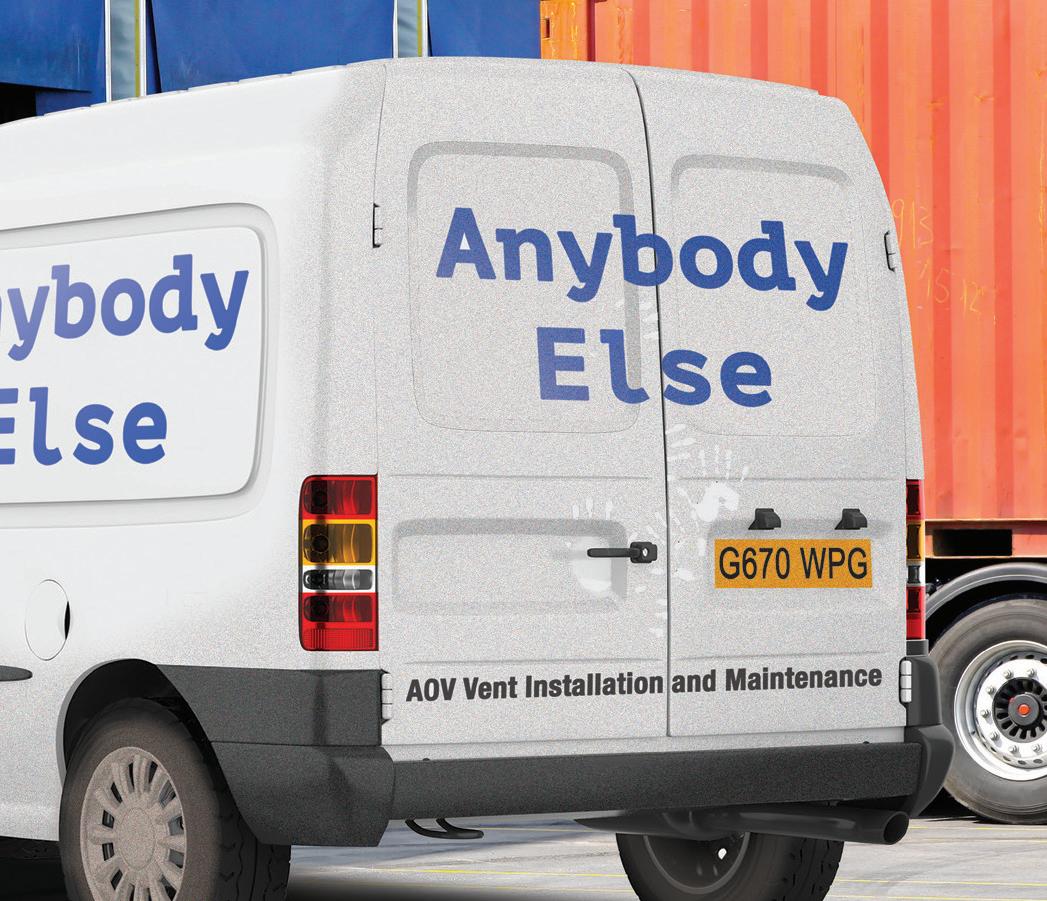
Choose Colt

Service Expertise built on experience.
WORKPLACE FUTURES
THE HUMAN TOUCH
that FMs evaluate what it is that the workplace does, access the value it o ers and work on delivering twice the experience in half the space.”
A powerful way of improving the employee experience is through the deployment of apps. Peter Reigo, of Flowscape, along with Claire Callan from client WSP, were on hand to explain that with hybrid working presenting such a major challenge, the latest tech can help deliver a frictionless employee experience; locating colleagues, booking a meeting room, or wayfinding in an unfamiliar building.
The theme for this year’s Workplace Futures Conference was Technology in the workplace: beyond the information age. Although this resulted in some sessions that delved in a bit too much detail into the tech, the programme, which was ably moderated by Chair Martin Pickard was interspersed with presentations that reminded us to keep in mind the human element.
Long-time FM innovator Lionel Prodgers MD of Agents4RM introduced the day’s theme with an exploration of the history of FM technology and how managing information became a key part of FM operations. Unfortunately, as Nigel Warrick of Cadline, pointed out in his session, according to research, over 95 per cent of all data captured goes unused in the engineering and construction industries.
Graham Perry from Datore suggested that if data analytics is di icult to manage in house, the solution for FMs is to outsource it. He also predicted that with the development of AI, in the future the FM industry will be able to create models that automate many processes.
WORKPLACE EXPERIENCE
Moving away from the tech, the next set of speakers focused on the workplace experience. Planon’s Peter Ankerstjerne explored the evolution of the experience-based o ice, a place that is there for reasons that are more than being productive. He explained the value proposition FMs provide has to be better than before as the workplace is not just about productivity. It’s about collaboration, learning, socialising and culture and that is why FMs have a unique opportunity to drive change
within the o ice from being attendance based to outcome based.
Mitie’s Simi Gandhi-Whitaker stressed the importance of asking the right questions of clients who otherwise feel overwhelmed by the tech and can’t see its value. As you talk through their main ‘pain points’ the need for solutions, for instance remote asset monitoring for hard to access sites, becomes apparent. It’s all about human intelligence, not artificial intelligence, she concluded.
Simone Fenton-Jarvis summed up the current hybrid workplace conundrum which is that we’re essentially using traditional working methods in a digital world. There is space in the employee experience for the o ice, she said, and even if there is some confusion around hybrid working we can still provide a place where people thrive.
MORE FOR LESS
Theories on delivering better value seemed somewhat academic given the news that the facilities sector is in danger of ‘falling o a cli ’. Citing research into the workplace experience by the Leesman Index, CEO Tim Oldman revealed 41 per cent of employers intend to use the o ice just one day a week and 69 per cent of organisations are looking to reduce their real estate footprints. “There are a whole lot of execs asking ‘why do we need a workplace anyway?’” he warned. “This is why it’s imperative
Building services are a key part of any technological drive and there were a number of sessions which explored the benefits of automation. This included Mark Davenport from Equans, who remarked that sometimes the biggest challenge is engaging the supply chain to embrace smart building technology. This was followed by a discussion session between Shane Betts, Alan Epps and David Bownass from Integral on the benefits of retrofitting buildings to achieve net zero.
FM’S PURPOSE
The day’s final sessions focused on facilities services. Mark Chapman and Charlotte Coles-Morris explained the development and roll-out of an app for SBFM employees; Stefano Bensi, of So Bank Robotics, put the case for Cobots in cleaning and Mike Cant from Mercury FM argued that corporate decision-making shouldn’t just be about data. It was Harpreet Cheema of Sodexo however, who reminded delegates of the influence of end users. All of us have access to data to make a di erence to people’s lives, he said, but don’t start with the technology or even the client, think about the ‘customers’, the people coming into that building.
FMs need to ask themselves, ‘what is the purpose of the tech I’m employing - what is the value for my client and the people using that space?’ “You should be able to articulate that value,” he said, “for if you can focus on adding value for the user, everything else should slot into place.”
It was a useful lesson, and one echoed by Lucy Jeynes in her regular conference sum up and call to action, that when looking at a technology you must always think about who will be the ultimate beneficiaries.


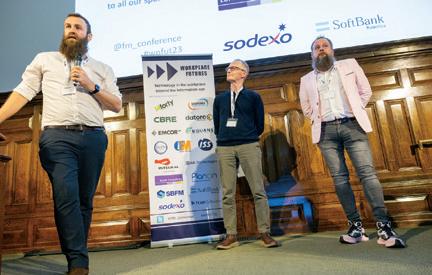

www.workplace-futures.co.uk
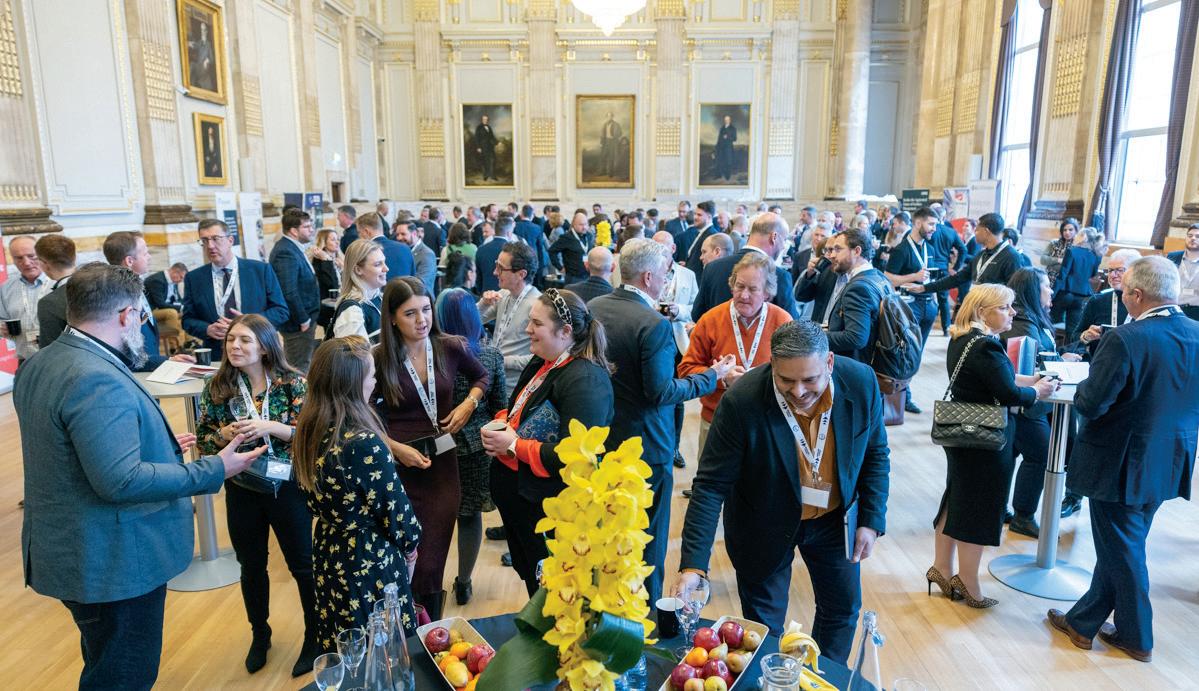
NEWS & ANALYSIS FMJ.CO.UK MARCH 2023 10
The 2023 Workplace Futures Conference explored ways technology might change facilities management for the better. But the human experience remains a priority
Levelling the playing field
In 2023, it seems crazy to think that we are still striving for a world free of bias, stereotypes, and discrimination; and that some people are still treated unfairly and don’t have the same opportunities.
However, this International Women’s Day (8th March), four inspirational leading ladies from Chubb Fire and Security UK & Ireland are sharing their experiences about gender inequality and thoughts on how everyone can play a part in levelling the playing field.

Challenging behaviours
“In my early career, way before joining Chubb, I would go into meeting rooms and be the only female in the room. For some reason, that automatically made me the coffee maker and the note taker,” says Marketing and Communications Director Carla Sousa. “After a few rounds of this, I thought, ‘why me?’ – I should be an equal voice here and be able to contribute equally. So, I spoke up and challenged the guys in the room. But that was down to me to flag it up.”
Lesley Leach is Human Resources Director and recalls a time when she was working in South Africa when she felt unequal to men despite being head of Human Resources. “I laugh about it now, but there was such a male-dominated culture in South Africa that even when I was chairing union meetings, some men would refuse to make eye contact with me. They’d only speak to my male colleague sitting next to me.”
Changing mindsets
“Why can’t women be fire and security engineers?” asks Sue Dean, Director of Business Support. “The fire and security industry is typically male-dominated, but we need to do more to change the mindset of women and men to encourage more young women into these exciting roles. Women are ambitious too and should be given opportunities to prove themselves in a ‘man’s job’.”
Kirsty Brooks is the Director of Employee Experience and Development; she says that her career has taught her the importance of being authentic and not being afraid to fight for her career goals. “As a woman, you shouldn’t be afraid to be bold. It is a great way to build your network and discover new opportunities. But most importantly, you need to be yourself.”
Sousa Marketing and Communications Director
Director
Kirsty adds, “We’re striving for a place where men and women can compete on an equal playing field. Here at Chubb, we’re creating a people-first culture and not trying to advance women beyond men. We’d be undoing all our great work and then excluding another group of people. Opportunities should be inclusive, not exclusive.”
People first
Chubb’s people-first ethos is closing the gap between women and men, explains Lesley, “We already have policies in place, and we’re constantly refining and developing new ones to ensure equal opportunities for everybody, and we are celebrating diversity.
“Historically, the gap between men and women widens when the time comes to start a family. Women are biologically built to have children, so when they have time off work, the gap widens because men can take opportunities for personal development and negotiate promotions. But we’re levelling the playing field with support frameworks that recognise women as the primary caregiver, no matter what happens in society. We are an employer that supports them to be both a mother and a successful career woman.
“Offering hybrid and flexible working is a great example of this. We’re making it, so women don’t have to choose between a career and looking after their family. Typically, working mums reduce working hours, ultimately reducing their pay and limiting their opportunities. Hybrid and flexible working means women can fulfil both roles, continuing to work the same number of hours and earn the same money but do it more flexibly around their life and family commitments.”
An inclusive culture
An inclusive culture is the ultimate aim, according to Carla. “We’re looking at all our policies and considering our colleagues’ thoughts and opinions, so we are not discriminating. A change in mindset will catalyse a culture change, a culture where inclusion becomes the priority. Then we’ll be levelling the playing field.”
www.chubb.co.uk
Dean Director of Business Support
Kirsty Brooks Director of Employee Experience and Development
Opportunities should be inclusive not exclusive.
Carla
Sue
Lesley Leach Human Resources
CLIMATE DEBATE
integrated project insurance model and decarbonising heat networks.
This article was born when Will asked me “Why isn’t there an Earthshot prize* for the construction industry?” I was bemused, and possibly a bit cavalier because I was concerned about a deadline and realised this was not going to be a short conversation. It was more likely headed towards a not unusual, excited exchange of ideas and more existential than the long report I was writing. I asked him what he meant because the Earthshot prize addresses all industries and sectors, and I had my doubts about the whole point of the prize anyway. This is a dialogue from our conversation which I hope sparks some interesting thoughts and ideas.
WP-W: Call it by whatever name you like. But consider this - for the past 25 or 30 years working in practice, architects and engineers have made major contributions towards sustainability and ESG in the built environment. A small consequence is that we finally have developers and occupiers on the stage talking about it, not the architects and engineers. We do not have another 30 years to try to get more of the world to get on board, and not just talk about it but support the work we do in practice.
MS: Do you mean research, such as funding for academics? I know about some useful investment in aspects such as the performance gap,
WP-W: I mean industry investment and contribution in Practice, given by the developers, and investors, even insurers, in that sense an Earthshot. We have had good technological research from Innovate UK, but I sometimes question if that has translated into practice, and if not, where the shortfalls are into making things work in reality and providing better outcomes. There just isn’t enough investment in practice to help us dig deep and work on the issues to improve processes and to innovate.
MS: You are right. Our work on the Health & Wellness in O ices was so elaborate, but we haven’t really attracted the time or resources to put it into practice – and imagine what leaps it would make if we did have the opportunity. I also know that you have spent a lot of time volunteering, and being the original author to help create sustainability systems such as SKA, and didn’t you also volunteer time to the RIBA sustainable communities project?
WP-W: Yes, and plenty of others too. The architecture and design community are excellent at volunteering our time to industry bodies and on educating clients, trying to bring people in practice together and making a di erence. Have you considered that we spend so much of our time volunteering and helping clients with strategies, ensuring they have ESG strategies on the right path, help them get in line with investor expectations, especially with what impact investors require, knowing that there is a shortage of skillsets and experience needed to do the work, but then the investors swoop in and take all the credit? It’s all work and no pay!
MS: And in terms of innovation in materials and processes as well. For example, isn’t there enough evidence to indicate that CLT (cross-laminated timber) used in buildings can be more fire resistant than was earlier assumed? But they aren’t built because insurers are holding their ground either by disputing the claims of research or have no willingness to work with practice to find solutions for a better environment. We can do so much with CLT if only we were able to build more with it!
WP-W: I was also reminded of the integrated project insurance model. Hasn’t that proven to work well to reduce the fear of liability and work in a no-blame culture?
MS: Yes, but using the model means educating clients and service providers, giving them the time and resources to understand why it will result in better and more outcome driven practices in sustainability. We do not have that. We have to keep working within the status quo, not because we don’t want to adopt innovative practices, but we don’t have the resources to. To think we are called the industry with the most inertia towards change. Similarly for operational performance of buildings.
WP-W: It is interesting you say that. We have created frameworks, processes and technology innovations that work. I think this is specifically about bringing resources in to fill that gap between the research and practice, by investing in the practice of the built environment.

MS: It is time for investors to come out of their silos and see that we need resources to do what they are asking us to do; generate positive social and environmental impact alongside a financial gain.

WP-W: Not just the investors, but anyone who is demanding better performance from us, but without the means to provide it – investors, developers, clients, insurers, and occupiers. They might think it is a big ask, but it is about time, don’t you think?
*https://earthshotprize.org/
COMMENT MARCH 2023 12
Mitakshi
Sirsi, Director of Sustainability, Broadway Malyan and William Poole-Wilson, Founder and Managing Director, WILL+Partners discuss how the construction industry and architecture & design firms can help improve sustainable outcomes in the built environment
ADVICE & OPINION
Mitakshi Sirsi William Poole-Wilson
Nationwide coverage and rapid response times with Kingspan Light + Air’s experienced smoke control maintenance engineers.
Regular servicing and maintenance of smoke ventilation systems is critical. Our dedicated team of engineers work with clients to regularly inspect and test smoke ventilation systems to ensure that they are working properly and are fully compliant with local regulations.

Smoke management systems must be maintained
Failure of a single element can impact the effectiveness of your system, potentially resulting in complete breakdown and unsafe conditions in your building. Therefore, it should be regularly tested and maintained. This is a legal requirement and should be done by a competent technical professional.
Tailored to your needs
We understand that each building is unique and that’s why we tailor our maintenance plans to meet your specifi c
needs. We offer a range of packages to suit all building requirements including both annual and multi visit annual contracts for smoke ventilation system maintenance.
Talk to us about a service contract



Our experts are available nationwide 24/7, 365 days a year to respond to system failures and call out requests. They are also equipped to perform remedial works and preventative refurbishment to replace older or broken equipment as they carry a comprehensive stock of spare parts.

Kingspan Light + Air T: +44 (0) 29 2077 6160 E: info@kingspanlightandair.com www.kingspan.com/gb/en/services/smoke-control-system-maintenance/
FLUORESCENT BANNED
Lighting regulations have had a massive impact on the lighting industry over the past 15 years. Yet while the reduction of energy use for lighting has been made possible, there are many instances when a consummate reduction in energy use has been achieved. Government departments are now seeking to enhance regulations to achieve even greater energy savings. Is this achievable? The huge potential energy savings made possible by moving away from incandescent lamps, low e iciency fluorescent, compact fluorescent and metal halide to LED cannot be repeated, but smaller savings are achievable at very significant capital cost.
Since BREXIT there has been an ambition in the UK to “simplify” inherited EU regulations and the Department for Business, Energy & Industrial Strategy (BEIS) has been looking at introducing new EcoDesign requirements for lighting products(i) These were discussed over the last year and on January 10th they published a final public consultation on the new regulations that you can read and respond to at the end of this article(ii)
EXISTING LIGHTING

What does this mean for your existing lighting installation? Primarily fluorescent lamps, even T5 HE fluorescent tubes are going to be banned this year. This is part of a two-pronged attack, as first the mercury exemption for lighting in the restriction of hazardous substances regulations (ROHS)(iii) has been removed. Secondly, the BEIS EcoDesign proposal doubles down on this by requiring a minimum energy performance standard (MEPS) of 120 Lumens per Watt for all mains operated light sources. This MEPS also kills o all compact fluorescent lamps, many metal halide lamps and the last remaining tungsten halogen lamps for general lighting. It also kills o many LED replacement lamp products so there will be little choice other than to replace complete lighting systems when any stock of lamps you currently use are depleted.
Planning for this obsolescence is something that needs to start soon. As lighting designers, we have undertaken a number of technology replacement schemes to determine the optimum solutions that
can deliver better and more economic lighting systems with maximum reutilisation of the existing equipment and wiring.
fluorescent or metal halide. LEDs are also instantly responsive, so with good design the users of spaces should not even be aware their lighting is controlled automatically.
Using available daylight is a great option as it doesn’t just save energy but improves people’s mood and wellbeing. Absence detection also saves energy, however dimming rather than switching removes the distraction of lights being switched on and o in the user’s peripheral vision. LED’s extremely long life and gradual reduction in output o ers extremely valuable constant luminance control.
What has become manifestly obvious is that LED retrofits for fluorescent lamps are a rather shortterm solution, o en accompanied by distinctly poor lighting performance. Although these products have substantially improved, there are always complications relating to the interface with any existing fluorescent gear and optics, particularly for glare control. There will also be problems with many LED fluorescent replacement lamps failing to meet the requirements set out in the BEIS proposed regulation. None of these replacement lamps will work with dimming systems, even those for energy saving such as absence detection or daylight harvesting.
LIGHTING CONTROL SOLUTIONS

The greatest energy savings in lighting are going to be provided by well designed lighting control systems. Although not part of product regulations such as EcoDesign, lighting controls are becoming a regulatory requirement for new buildings or larger scale refurbishments. The change to LED has made lighting control much more e ective. Because LEDs are electronic components, they are easy to control, unlike legacy technologies such as
With control systems the human factor should not be forgotten, as people are not mechanical devices and can be unpredictable in their response to lighting changes. Some users are also easily intimidated by a control system that is not completely intuitive – whether it’s a touch screen, push button or dedicated phone app. People might be inhibited from making changes to lighting that impact other people around them, but they do like to control their own personal working environment. Our role as lighting designers requires us to understand people as much as lighting systems, and develop control systems that can deliver good quality lighting and energy savings, which are also human friendly from a user’s perspective.
ACTIONS NEEDED
Assess your exposure to the removal of fluorescent and HID lamps from the market. Develop a strategy to maintain your existing lighting systems by stockholding lamps or replacing systems.

Assess impacts on existing lighting controls and e ects on energy costs if existing systems will no longer work.
Create medium to long term strategy to upgrade lighting systems to full LED using lighting controls.
(i) www.gov.uk/guidance/placing-energy-relatedproducts-on-the-uk-market
(ii) www.gov.uk/government/consultations/newecodesign-requirements-for-lighting-products
(iii) www.gov.uk/guidance/rohs-compliance-and-guidance
14 MARCH 2023 ADVICE & OPINION
COMPLIANCE
https://ksld.com In association with
A new wave of regulations, including the rewriting of the EcoDesign lighting regulations and the removal of the mercury exemptions for lighting means fluorescent lamps will be banned in the UK from September 2023 says Kevan Shaw, Design Director at Kevan Shaw Lighting Design
We’re not your usual waste company



We work with you to create value


One supplier for all your waste streams Earn thousands of pounds from your recycling

Engaging education programmes
Innovative waste technologies

ENERGY FUTURES
FMJ AIMS TO SUPPORT TECHNICAL EXPERTISE IN THE FM MARKET Technologies

security,
which enable business-generated
power can reduce costs, lower emissions and increase energy
says Anthony Ainsworth, Chief Operating O cer at npower Business Solutions
Formore than a year, the UK energy market has experienced a period of unprecedented volatility, with resulting high wholesale prices impacting all businesses. While policymakers have put short-term plans in place to o er some relief from rising energy prices - including the Energy Bill Relief Scheme (EBRS), announced in September 2022 - a longer-term and more sustainable approach is needed to help businesses reduce energy demand and limit their exposure to the global markets.
That said, many businesses are already taking control of their own energy future by investing in sustainable on-site generation. In fact, in our Business Energy Tracker report, which launched in 2022, more than a quarter (27 per cent) of respondents said they were planning to invest in this measure to combat energy risk.
It’s easy to see why, not only does it provide businesses with a route to lower energy costs, increased self-su iciency and reduced dependency on the grid, it also helps reduce emissions.
But, looking beyond this, it could also enable them to play a crucial role in decarbonising the UK’s energy system by reducing our dependence on imported natural gas, resulting in lower costs and greater energy security.
How? This is something our reportThe Future of Energy: The critical role of business in a zero-carbon worldinvestigated.
TOWARDS A BUSINESS-POWERED FUTURE?
The report uses new modelling to assess whether on-site generation technologies, including wind, solar photovoltaic (PV), battery storage, biogas and biomethane, could feasibly replace the electricity generated from imported natural gas by 2035. It was based on the projection from the Climate Change Committee’s Sixth
Carbon Budget that, by that date, the UK would require 16 TWh of power from imported natural gas.
The scenarios explored in the report show that by 2035:
» On-site wind capacity within commercial and industrial facilities could reach between 6 and 29 GW
» Installed roof-top solar PV could account for 6.5 GW
» Biogas power generation could be up to 16 TWh
» Hydrogen and biomethane injection could be close to 33 and 7.5 TWh, respectively
In addition, the report predicted that having more business-generated power will lower energy costs, with the overall levelised cost of electricity for the proposed options ranging between £49 and £261/MWh, lower than the wholesale prices we’ve seen recently. Crucially, it will also support the net zero ambition, with emissions savings of up to 6.7 MtCO2/year.
PLANNING FOR A NET ZERO FUTURE
How can facilities managers take action now towards net zero and a more resilient energy future?
1. Understand your current sustainability status
To help assess the most suitable path to net zero for your organisation, it is important to have insight on how you are currently using energy and what impact your e iciency and sustainability projects are already having. That way, you can understand the best measures for the future, so you can plan an e ective and sustainable energy strategy. Tools such as our new Net Zero Calculator - an easy-to-use interactive tool - can help your business develop a holistic net zero programme that delivers real and lasting benefits.
2. Build the case
During the current environment, building the commercial case for any kind of net zero investment such as on-site generation can be challenging. Therefore, it is important to clearly demonstrate the benefits it will bring, for example:

» Reduction in carbon emissions: On-site generation technologies that use 100 per cent renewable sources - such as solar PV or wind - will help a business significantly reduce its carbon footprint.
» Lower energy costs: Installing on-site generation technology can make a real impact on the bottom line through a reduction in energy costs, as a site will only generate the energy the business needs to use, naturally operating in a more e icient way.
» Greater control: Having an on-site supply helps to protect businesses against wholesale price volatility, meaning you can plan ahead with greater certainty.
» Improved reputation: Installing onsite generation is a clear signal that your business is serious about sustainability, particularly in the eyes of customers and throughout your supply chain.
3. Take action
Working with an energy partner can help you assess the best options for your business, from making the move to renewable supply to exploring the benefits of sustainable on-site generation, battery storage and electric fleets.
UNLOCKING THE POWER POTENTIAL OF BUSINESS
What the Future of Energy report shows is that businesses really do have the power to shape our energy future. However, achieving this requires policy and incentives to support it, such as tax deduction for equipment purchases, which could further encourage businesses’ involvement in energy production. However, what we wanted to demonstrate was the potential. And, we believe that this modelling provides a compelling case for policymakers to encourage more businesses to be part of the 2035 zero-carbon system and contribute to the national agenda of energy independence and net zeroboth now and in the future.
The Future of Energy: The critical role of business in a zero-carbon world, can be downloaded herehttp://bit.ly/3XhCcIx
MARCH 2023 16 ADVICE & OPINION
FACTS
FAST
Missing something?
You wouldn’t hire a car without seats.
So why hire workspace without chairs? Or air-conditioning, fire safety equipment, white goods, furniture, WiFi and everything else you need?
Quite simply, when we say we can deliver everything to you, we mean it.
Algeco turnkey solutions deliver all the flexibility, convenience, peace of mind you need. In one package.


All available immediately with the largest hire fleet in the UK. All supported by ESG policies that reflect your priorities for better sustainability. And all backed by leading Health & Safety standards that mean fewer risks for you.
Why miss out when you can have it all?
Call us now on 0808 108 2222 or visit algeco.co.uk/missing-something
The Business Services Association




@THEBSASSOC Read the #BSA’s #SpringBudget2023 submission here welcoming @Jeremy_Hunt’s commitment to economic stability, business confidence, economic growth, and long-term productivity: https://bit.ly/3IwLACQ
Daren Larmour CEng CIWFM MIET https:// bit.ly/3J2C6Rd Leader in FM strategies & Technical Operations / Chief Engineer - I’m delighted to start my new job as Executive Director of Airport FM (Sinyar PM) for the Abu Dhabi Airports. Exciting times ahead
@ISS__UK “The in-office experience needs to develop and improve to compete with the advantages of remote work,” says Will Richards, Workplace Deployment Director at ISS. Find out why it is crucial to think creatively about workplace design: https://bit.ly/3m5ipPC

Ross Abbate linkedin.com/in/rossabbate Chief Executive Officer - Mace Operate - With procurement in workplace / fm services increasing, I saw the effects of “buying cheap” pre-Covid caused during Covid. Hopefully there is learning from the experience. https://lnkd.in/e7cP7uwb
@CIEHF WHAT IS ERGONOMICS? Do you struggle to know where to start when someone asks you for the answer “what is ergonomics?” start with this video: https:// vimeo.com/759416616
Nick Fox https://bit.ly/3DCkoBc Estates and FM Consultant I had a call with a contact who was rolling out a new CAFM system across a large university estate, and had employed a qualified Change Manager to work alongside them for the duration of the rollout and beyond. My reflection was that in my 15 years in the FM industry, every role I have had has been managing some degree of change. So, should a Change Manager be a permanent addition to your organisation chart? What benefits could be realised?
@BritishCleaning Organisers of @ TheCleaningShow have revealed its 2023 Trends Report, exploring where the sector is heading, the latest innovations and trends, and the challenges affecting the cleaning and FM industries. Download a free copy at: http://bit.ly/3Y6JGhX
ALAN STENSON, CEO OF NEUTRAL CARBON ZONE
AS A SECTOR WE CAN MAKE AN ENORMOUS DIFFERENCE IN REDUCING EMISSIONS
The FM industry has a crucial role to play in reducing our global carbon footprint and achieving a net zero future. The built environment accounts for approximately 39 per cent of global greenhouse gas emissions, and by feeding straight into that, FMs play a leading role in reducing energy usage, increasing energy e iciency and transitioning to a lowcarbon future. FMs can genuinely and quite literally change the world.
Net zero refers to achieving a balance between the amount of greenhouse gas emissions produced and the amount removed from the atmosphere, e ectively reducing a carbon footprint to zero. So how can we achieve this?
Energy e icient practices are o en the first steps on the route to net zero. Measures such as upgrading building systems, reducing waste, and optimising energy use can significantly reduce emissions. Investing in building automation systems can help manage energy use, reduce waste and ensure the building is operating at peak. In other words, working smarter with the space we have.
FM companies can also drive the transition to clean, renewable energy sources such as solar, wind, and hydro power. In addition, combined heat and power (CHP) systems, can be an e ective way of reducing energy use and emissions.
While reducing emissions is absolutely essential, it may not be possible to achieve net zero just through energy e iciency and renewable energy. The infrastructure may not yet be in place, or the specific requirements of the company in question may not be appropriately satisfied by e iciency measures alone. In this case, carbon o setting can be used to compensate for any currently unavoidable emissions by investing in approved and verifiable carbon o set projects that can definitively and permanently balance emissions. Encouraging the use of low-carbon transportation options, such as electric/ hybrid vehicles and public transport can significantly reduce emissions. FM companies can also implement initiatives such as bikesharing programmes, car-share schemes, local employment policies and active commuting to encourage sustainable transportation practices.
Encouraging employees to adopt sustainable practices and behaviours both at work and at home is critical to achieving net zero. FMs can provide resources and education to help employees understand the impact of their actions and how they can reduce emissions, and therefore empower them to take action.
FMs can reduce supply chain emissions by sourcing materials and products that have a low carbon footprint. This includes selecting suppliers who share a commitment to sustainability and reducing the carbon footprint of their supply chain. Suppliers who can support their customers
with a detailed breakdown of what their scope 3 emissions are, based on the products and/or services they provide, how they are managing it and where they are in the process of reducing that impact are providing a critical service and valuable insight into the kind of data that is impossible to capture without that support. A collaborative approach that goes beyond a standard supplier/client relationship and makes it more of a partnership.
Reporting and Transparency. Regularly measuring, tracking, and reporting carbon emissions and progress towards net zero is critical to the success of any sustainability initiative. FMs need to be going into the detail of their emissions. It’s the specifics that are now being asked for. It’s no longer acceptable to simply tick the box to say you have an environmental policy. Clients, quite rightly want to know what the specific impact of a product or a service is. Sustainability is now so high on the agenda with many organisations incorporating environmental cost into their decision making processes throughout the entire business. It’s no longer a nice to have, it’s a must have.
Achieving net zero is a complex and multifaceted challenge that requires a comprehensive approach and a strong commitment. From upgrading building systems to investing in renewable energy, sensor technology and carbon o setting, there are a variety of strategies that FM companies can employ to reduce emissions and achieve a net zero future for themselves and for all of the companies that rely on them. The benefits of reducing emissions and contributing to a more sustainable future are significant, and FM has a vital role to play in leading the way.
While the journey towards net zero will be challenging, it’s important to remember that every step towards sustainability is a step in the right direction. It can be done… if we take action now.
Visit www.neutralcarbonzone.com for more information.
SOCIAL - BLOG MARCH 2023 18
ADVICE & OPINION
Alan Stenson, CEO, Neutral Carbon Zone
YOUR RELIABLE FUEL FACILITIES PARTNER













We



We’ll
Our

With

ARE YOU USING A RENEWABLE FUEL? HVO BENEFITS HOW WE CAN HELP
can support your
to
vegetable oil (HVO), our
alternative,
Up to 10-year storage lifespan and year-round performance Zero FAME content, reducing the risk of fuel degradation Endorsed by a wide range of OEMs, meets EN 15940:2016 & ASTM D975 specifications
switch
hydrotreated
fully sustainable drop-in diesel
seamlessly replacing your existing fuel.
fuel
uplift your old
and recycle it responsibly
Enjoy a smooth transition with our end-to-end project management
Cuts net CO2 emissions by up to 90% T: 0330 123 3399 W: CROWNOILENVIRONMENTAL.CO.UK E: SALES@CROWNOILENVIRONMENTAL.CO.UK Find out more about HVO here:
over 10 years’ experience delivering essential fuel services, you’re in safe hands
tank cleaning & NDT testing will future-proof your tanks and pipework
The Government’s Facilities Management Strategy* is designed to establish standards to address the quality of service which should be aspired to in the procurement of FM contracts. What impact do you think this initiative will have on the procurement of FM services and is enough attention being paid to the use of procurement to deliver sustainable FM outcomes?
*www.gov.uk/government/publications/facilities-management-strategy
a strategy will not only have a major impact on public sector spending, but that good practice will also flow through to other elements of the FM marketplace.

One of the three key threads from the new strategy appears to be the need for greater flexibility in the delivery of the services. Surely one of the key learnings from the pandemic has been the crucial role facilities management plays in the workplace experience and how there was a need to be adaptable and innovative in developing new workplace strategies which continue to meet the changing needs of building users.
Secondly, there is an acceptance of the need for “one team” with less demarcation between client and service provider.
THE IWFM CHAIR’S VIEW MARK WHITTAKER, GENERAL MANAGER, THOMSON FM LIMITED & CHAIR, INSTITUTE OF WORKPLACE & FACILITIES MANAGEMENT (IWFM)

The Government’s Facilities Management Strategy is a significant step forward for the industry and the Institute of Workplace and Facilities Management (IWFM) was delighted to be involved in its development.
Historically, there was always a criticism that there was a lack of consistency and coherence in how facilities management services had been procured and then delivered, with a cynicism that the key decision drivers were always cost and not what the quality of service should look like, which is perhaps given a much lower priority. Indeed, I remember several years ago attending a Crown Commercial Services (CCS) seminar where one of the attendees was recounting how her Government Department had previously very little input into the procurement exercise and were essentially told, “This is the FM contractor we have procured for you; now it’s over to you”. This detachment from the process clearly had led to a great deal of frustration and hostility before the contract had even begun. For the new strategy to be anything more than just words, it has needed to ensure it is relevant and clear in the desired outcomes, particularly given “the UK Government directs almost 20 per cent (£13 billion) of the total market” for FM procurement spend. With this level of spending power, the hope is that such
Mark Whittaker
I have seen countless examples of this working really well in the public sector. Thirdly, there is an obvious focus on sustainability given the Government’s net zero emissions by 2050 commitment. The Government clearly believes the facilities management profession has an important role in “improving air and water quality, tackling waste, increasing recycling, increasing biodiversity, and improving our natural environment”.
Given the stated ambition, the interesting next step will be to see how this works its way into procurement decisions; specifically, how tender questions, aligned to the new Strategy, will be framed and how weightings to the answers given will be apportioned in the overall decision-making. Once the award has been made and the contract begun, the strength of the new strategy will need to be evidenced in the outcomes across the Government estate.
From an IWFM perspective, I am heartened by the recognition that “FM professionals” need to be “equipped with e ective skills and capabilities”, and IWFM will have a critical role to play in this for our members.
THE SOURCING PROFESSIONAL’S VIEW

 JOANNA GOSLING, HEAD OF PROCUREMENT, EMCOR UK
JOANNA GOSLING, HEAD OF PROCUREMENT, EMCOR UK
I hope that this strategy ushers in a new era of collaboration between the public sector and FM providers, as buy in from both sides is needed to make it a success. From the public sector side, this can be primarily achieved by spending more time defining goals and how partnerships will work before putting a tender out to market. We see a lot of tenders that are essentially unchanged each renewal period.
A public sector portfolio can o en be a sprawling one, with buildings in various conditions. We hope that the focus placed on this strategy will help invigorate the understanding over

MARCH 2023 20
FM
CLINIC
ADVICE & OPINION
In FMJ's regular monthly column, our team of FM experts answer your questions about the world of facilities management
assets and the people that work across these sites to create more people-centric spaces, as well as o er room for innovation and flexibility over the course of a contract.
sustainability goals before tendering.
As public sector portfolios are so diverse there needs to be an appreciation that a one size fits all approach will not su ice. For example, it may not be feasible to kit out all buildings with smart tech if some are rarely used, or simply not appropriate due to age or condition.
Joanna Gosling
pricing
working with FMs on a commercial cost model that
Inviting providers to submit written responses about how they will develop the partnership and adapt to challenges over the course of a contract would be hugely helpful. This would also require introducing more flexible pricing schedules and supporting notes / assumptions to explain the o ering proposed and working with FMs on a commercial cost model that moves away from looking at m2 rates and towards one that can support growth and flexible portfolios. These contracts could share risk and reward so that both parties are equally invested in success.
The sustainability strategy should also look for a provider that is an “enabler” – a partner that brings together multiple strands seamlessly to drive value and success. For example, at EMCOR UK we have specialist energy management and carbon teams that can lend their expertise across numerous contracts to share best practice and recommendations

chain improvements and benefits our end clients.
FM strategy has the potential to be a gamechanger in how our industry
Sustainability extends beyond the partnership through an FM provider’s supply chain. We have a supply chain sustainability dashboard to record our metrics, which drives supply chain improvements and benefits our end clients. Whichever way you look at it, this new FM strategy has the potential to be a gamechanger in how our industry works with and supports the public sector.
THE SUSTAINABLITY EXPERT’S VIEW SUNIL SHAH, DIRECTOR AT ACCLARO ADVISORY

















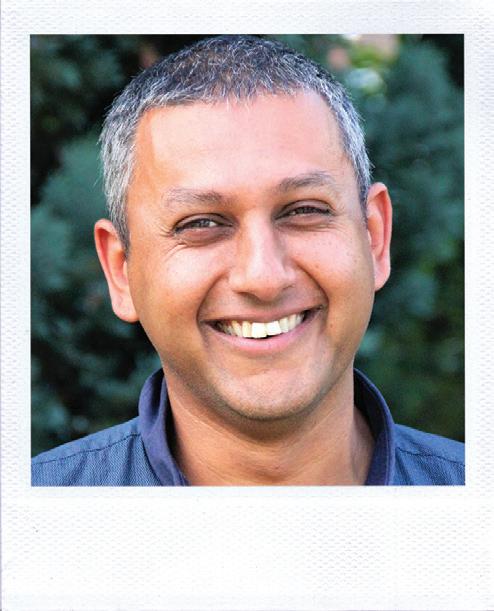 JoannaGosling
JoannaGosling
with
These changes will allow FMs to bring to life all their expertise and capabilities and demonstrate the full range of value they can bring to a partnership. This includes expertise in workplace, energy management, health and wellbeing, technical maintenance, tech and data, and social value. And of course, this also includes sustainability. I would encourage public sector teams to work with their internal colleagues and consultants to establish what good and excellent looks like in terms of
these issues not just at supply chain level but
The SFMI set out some guidance, based upon an investigation into best practices in FM, where ‘The 7 Principles of Sustainable FM Procurement’ framework was developed to help businesses address these issues not just at supply chain level but also within the wider value chain.
Use of procurement to deliver sustainable FM outcomes
Avoid placing sustainability in an ‘Innovation Box’ Focus on the impact’s material to the client
Create culture to negate conflicts early
Mobilise together
Work collaboratively
Embed sustainability in the SLAs














In itself, the strategy seems to be ticking a number of these boxes, utilising the procurement frameworks and also the Procurement Policy Notes to implement areas such as carbon reduction plans and social value standardised reporting. The intention is to move towards a position where longer term strategies are in place, necessary for delivering decarbonisation strategies –such as extending life of equipment and assets, implementing e iciency programmes, or low carbon heat solutions – which require longer term timelines and shared responsibilities with
Sunil Shah
MARCH 2023 21 FMJ.CO.UK FM CLINIC
ADVICE & OPINION
their internal colleagues and consultants to establish what good and excellent looks like in terms of
Inviting providers to submit written responses about how they will develop the partnership and adapt to challenges over the course of a contract would be hugely helpful. This would also require introducing more flexible pricing schedules and supporting notes / assumptions to explain the offering proposed and working with FMs on a commercial cost model that moves away from looking at m² rates...”
the client. Incorporating these strategies may not always be cheapest in the short term but will provide best value over a slightly longer term and therefore achieving these goals requires a di erent scoring assessment to the traditional model.
How this is incorporated into frameworks is therefore important where solutions have longer term paybacks – is it included in the SLA’s and form part of financial structures to ensure su icient focus is maintained in meeting the ambitions. The focus of frameworks and contract appointment still rests largely on cheapest short-term price – not fully articulating the desires of the strategy, leading to potential conflicts.
Procurement typically seeks to understand how an organisation performs and operates against corporate sustainability targets, rather than what can be delivered at the contract level. Research by the Corporate Climate Responsibility Monitor has shown that most organisations net zero plans lack substance – there is a target but no credible means for how they can be achieved.
An example of this is the Carbon Reduction Plans, which focus upon categories that are limited for FM, rather than suppliers and goods which account for over 50 per cent of typical property related emissions. Greater scrutiny is therefore required to assess declarations sometimes capturing a small proportion, coupled with the use of low-level o setting, to ensure e ectiveness. Whether these skills sets are in place across the procurement team is an open question, but are necessary for the Government Strategy to be meaningful and achieve its desired outcomes.
Placement on procurement professionals is unfair – they are part of the overall process and are driven by the organisational context. The Government context is still very much around high achieving strategies, but we are still waiting to see if the frameworks and contracts are given the opportunity to support and deliver. To meet the forward strategies, they must be given the chance.
THE MAINTENANCE PROVIDER’S VIEW
STEVE MCGREGOR, GROUP MANAGING DIRECTOR, DMA GROUP

In November, the Government published its Facilities Management Strategy, a framework which has been, truth be told, a very long time in the making.
The strategy outlines a vision to reshape the public estate, a huge swathe of built assets comprising more than 135,000 public buildings, including schools, hospitals, prisons, courts, job centres and many others in between.
In its own words, the proposal represents the first major attempt to establish “a coordinated, crossGovernment vision for facilities management, setting the strategic approach and standards which will govern what good looks like and the quality of service which should be aspired to”.
This framework is long overdue and should be applauded for several reasons. Firstly, I support the development of any initiative which seeks to improve FM service delivery, embed sustainability into the sector and contribute to local communities, especially those in deprived areas.
Second, the Government has highlighted the importance of the facilities management sector to the UK economy with this publication. It also recognises that we need a unified approach to li ing standards – this, in my view, is essential to the long-term prosperity of FM in the UK.
Our industry already adds around £65 billion to national GDP every year, with the public sector accounting for around 20 per cent of that spend. This makes the Government’s Facilities Management Strategy an extremely serious and significant piece of work that we should all do our best to embrace and extract value from.


Not only does the strategy clearly set out measurable alignment between values and goals, but it also represents a framework to align and articulate FM objectives to better interface with people. This includes developing workplaces supported by slicker processes and technologies capable of realising improved productivity and more sustainable outcomes.
Although standardisation and consistency of process is crucial, we need to make sure that innovation and agility is enabled in the new FM environment in the public sector. These processes must embrace technology and digitalisation in a way that allows thought-leading SMEs to contribute new and fresh ways of thinking.
Indeed, the Government’s framework must be treated as an opportunity to move away from the ‘big is always best’ mentality. This will allow the sector to make up on lost ground in terms of technological advancement and process automation.
DMA Group’s own research confirms that 77 per cent of FM professionals believe our industry is behind the curve. Even more concerning is the fact that less than one in four know where to start their digitalisation journeys, or what the endpoint or ‘art of the possible’ even looks like.
Opportunities are therefore being missed. Our own experience confirms that through process automation our back-o ice e iciency has improved by 50 per cent, while our engineers are twice as productive as they were five years ago. If embraced properly, this new approach advocated by the Government could help to unlock those kinds of gains across a huge number of public sector estates.
I would also like to see a drive towards common platforms built on genuinely ‘live’ data for performance and status reporting to support better decision making, without lag or masking of performance facts and with automated calls to action. There is no reason why this strategy cannot incorporate, encourage and support the implementation of such standards.
It’s imperative to make the FM sector a more attractive career proposition – something this strategy can also help to achieve. Attracting and retaining talent is critical to safeguarding the future of the industry, and adopting smarter, tech-driven processes will no doubt serve to make FM a more enticing prospect for new entrants.
Setting a forward strategy for the Government estate is necessary and a welcome addition to meet the 2050 net zero targets and wider sustainability goals. Aspirations are clearly laid out, particularly for the environmental sustainability aspects, with a desire to be embedded into all contracts by 2030. At the top level, the strategy would move us along quickly in a structured manner through 2025 targets such as ‘Commitments on sustainability are embedded into all FM decision making and maintenance plans’.
MARCH 2023 22
Do you have a question that you’d like answered by the FMJ Clinic? Email: sara.bean@kpmmedia.co.uk FM CLINIC
ADVICE & OPINION
Steve McGregor

















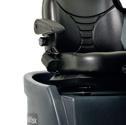




















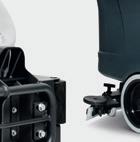




























































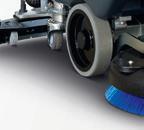








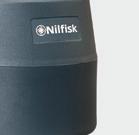



































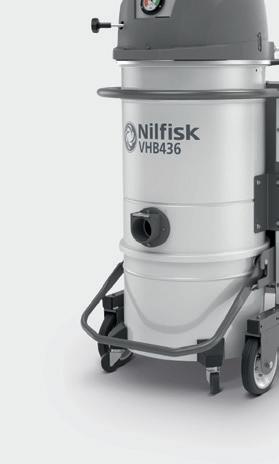



















































Learn more Register Now Visit Nilfisk at the Cleaning Show 2023 Stand C5 7391 2/2023 Explore our range Floorcare
DIGITAL JOURNEY

Paul McCarthy, CTO at Service Works Global explores the benefits of digitalisation in the built environment and advises how FMs can start the digital journey as illustrated by two case studies
















Ask a range of professionals in the construction, design and FM sectors to describe building information modelling (BIM) and you’ll likely get a mixed set of responses. Some may be unfamiliar with BIM; others might think that it is simply a piece of technology implemented during the construction of a building.





























































































































































































































































































































































































































































































































































































































































The truth is that BIM is a powerful tool for any business working towards a digital transformation. That’s one of the reasons that the UK BIM Alliance(i), rebranded to ‘nima’ late last year (nima is not an abbreviation, but the Greek word for thread). The rebrand was recognition of the fact that the scope of digital transformation is much wider than BIM, and includes digital twins, FM and maintenance, business e iciency,
and sustainability.















































































































































































































For me, the best way to explain BIM to someone unfamiliar or unsure with the concept is to describe it as a process of information management and sharing. Once we have this understanding, conversations can progress about how we begin the journey towards a smart building and the various systems that need to be in place. For some, that journey begins at the construction stage.
BIM DURING CONSTRUCTION





The UK Government has been promoting the adoption of BIM in the construction industry for more than a decade, and over that time its use has grown significantly – and for good






























































































































































































































































































































































reason.

































































































BIM enables collaboration among project stakeholders by providing a common platform for sharing information. For example, architects, engineers, and constructors can all access the same model, which ensures that everyone is working from the most up-to-date information.
BIM also improves coordination among design and construction teams by allowing them to detect and resolve conflicts before construction begins. This increases e iciencies and reduces costs, as problems are detected before work is underway.























































It also plays an important role in compliance by allowing teams to check the design against building codes and safety standards.


CASE STUDY BIM MARCH 2023 24
Buildings constructed with the support of BIM information can retain that data for the long run and reap the benefits.
A common misconception I come across is that if an existing building does not have a BIM model in place, it’s either not worth the cost or too di icult to implement. I’m pleased to say that this couldn’t be further from the truth.
UTILISING BIM DATA IN EXISTING BUILDINGS

The UK Green Building Council(ii) states that 80 per cent of the buildings we’ll be using in 2050 have already been built, which is why it would be remiss of us as an industry to focus too much on new builds when we have so much existing stock to digitally transform. Fortunately, the process of developing a digital model and gathering the data does not have to be time-consuming or expensive. We recently built a digital representation of an 8000 m2 school in Sweden over the course of a weekend, using laser scanning technology, meaning there was no disruption to the students.
BIM models are commonly created through the use of 3D laser scanning and georeferencing technology. Once set up, the fully operational and data-rich model has some immediate benefits. For example, the new digital model can replace floorplans that may well be outdated. This will be vital for any future retrofitting or construction work, as all relevant parties can access the model, safe in the knowledge that it contains up-todate information.
As far as smart buildings go, the next step in the journey is implementing sensors to capture real-time data. Sensors can track a wide array of things, from room occupancy levels to how full a bin is – when a cleaner can then be pinged with a message to empty
that bin.
With so many possibilities for data collection it can be tempting to add sensors across an entire estate and track everything you can. However, my advice is to start small. There is no point capturing data that you won’t have a use for or won’t have someone designated to analyse and report back.
Consider what will be most valuable for your organisation and start there. One area that all businesses will be impacted by, regardless of sector, is energy, especially as the Government support programme is changing at the end of the month(iii) By analysing sensor data about which rooms of a building are (or are not) used, informed decisions can be made about the lighting and heating requirements for those spaces. The data may dispel pre-existing assumptions of which spaces employees use, and when. The larger the estate, the more impactful strategic decisions like this can be, helping to drive sustainability and cut energy costs.
FMs can implement their own operational systems with a BIM model and sensor technology to help drive operational e ciency. Of course, it’s vital that all systems are able to integrate and “talk” to each other, so make that a key point of consideration before any new software outlay.”
Scenario planning: Model ‘what if’ scenarios on real operational data to understand the impact of a change without committing to it.
Increased efficiency and reduced costs: By monitoring the performance of a digital twin in real-time, it is possible to identify and fix problems quickly, which can lead to increased efficiency and reduced costs.
Predictive maintenance: Using the data from the digital twin, organisations can have better understanding of their assets and its condition, allowing them to schedule maintenance before failure occurs. This reduces unnecessary trips for maintenance staff, who can also view the dimensions of access points in advance to be sure that they will be able to fit machinery into a space.
With these elements in place, a building is ready for enhanced operational efficiency, which is where FM comes into the picture.
THE BENEFITS OF DIGITALISATION FOR FM

















FMs can implement their own operational systems with a BIM model and sensor technology to help drive operational e iciency. Of course, it’s vital that all systems are able to integrate and “talk” to each other, so make that a key point of consideration before any new so ware outlay.
outlay.
DIGITAL TWINS
With the sensors in place and integrated with the BIM information, you can create a digital twin – this is an exact replica of a building, its physical attributes and live operational data. The benefits of a digital twin include:
provide recommendations on how












I said that it helps to think of BIM as information management and sharing, and this is where FM can truly show its value to a business. FMs and the teams they manage are the eyes and ears of a building, and best placed to provide recommendations on how to improve operational e iciency.
One example is smarter cleaning processes. Room occupancy data can be shared with FMs so that instead of set rotas for cleaning teams, they can employ a flexible approach and only clean where and when required. Sensors can be used to notify cleaners when a bin needs to be emptied or toilet roll needs to be replenished, so they are not wasting time on tasks that are not necessary.
rotas for cleaning teams, they can employ a and where
I mentioned predictive maintenance as another area that can be supported by digitalisation. The longer that BIM information is being gathered and stored, the greater insight that FMs will have into
FMJ.CO.UK BIM CASE STUDY MARCH 2023 25
their assets. Take li maintenance, for example. In places such as airports and hospitals, li s are essential, and any downtime can have immediate consequences.
A fully operational data system can store maintenance history, as well as collect real-time data showing when a li is in use. Warranties and manuals can also be stored in the system so technicians have all they need at their fingertips. Planned maintenance can be scheduled during times of low usage so that any impact is minimal. Energy costs, sustainability, operational e iciency – there are too many reasons to not be gathering and sharing building data. Other regions that we work in, such as Scandinavia, have made great strides in adopting smart buildings and I undoubtedly expect to see this trend continue to grow in the UK.
CASE STUDIES
Bräckeskolan School, Gothenburg
We developed a 3D BIM model for Bräckeskolan School due to existing 2D building drawings being inaccurate as changes and renovations made by the school over the years had not been updated. The model and data was used as a design reference for the renovation and extension of the school, and for the production of as-built plans.
SWG carried out the fieldwork with 3D laser scanning and georeferencing technology over a weekend. From there, the 3D BIM model, the plan, façade drawings, and the point cloud were all delivered together alongside a point cloud viewer with 360° images. This gave the Local Government Administration o ice the opportunity to virtually ‘walk’ around the interior and exterior of the building, and easily navigate to a specific location, to see what it would look like or to take measurements.
Key outcomes from the project:
Energy costs, sustainability, operational e ciency – there are too many reasons to not be gathering and sharing building data. Other regions that we work in, such as Scandinavia, have made great strides in adopting smart buildings and I undoubtedly expect to see this trend continue to grow in the UK.
The architect had a complete Revit model (the design model) to start working with, which means that future planning and building work will be smoother, easier, and faster.
The architect did not need to take additional measurements on-site or produce new data.
The different designers were given reliable documentation that they could accurately draw from.
The designers used SWG’s point cloud viewer to make virtual site visits to the building and took measurements directly from the model.
The architect and designers have the correct information and documentation to hand over to the building and construction workers on the school site. This ensures that the work proceeds with minimal delays in production.
The City of Gothenburg Local Administration benefits from smooth project progress at all stages, with satisfied project participants, lower costs, and less project time required.
Linköping Sports Centre
Property management company
Lejonfastigheter partnered with SWG to produce a BIM model to support redevelopment of the sports centre in Linköping, Sweden. A 3D BIM model was created of the building, and the whole project was completed in just 11 weeks.
The project included:
3D laser scanning part of the building, processing the point cloud and developing a BIM model. Digitising existing drawings and adding these to the BIM model.
All building information, including the correct relationship model, was made available in SWG’s QFM system.
The client is able to access:
A geometrically correct 3D BIM model, drawings, facades and sections as well as color-coded layouts on areas and spaces for all floors.
Point cloud with complete navigable 3D image and correct measurements. Building information available for all employees to use around the clock.

REFERENCES
(i)https://wearenima.im/
(ii) www.ukgbc.org/climate-change-2/
(iii) www.gov.uk/guidance/energy-billsdiscount-scheme
CASE STUDY BIM MARCH 2023 26

























Simplify your meetings, room booking, desk booking and visitor management with flexible and fully integrated hardware and software solutions. Room booking Naso room manager Room booking Liso room manager Desk booking Kleeo desk manager Meeting connectivity Delo connection manager Clever workplace solutions 01638 510 900 sales@anders-kern.co.uk www.anders-kern.co.uk/evoko-naso Get in touch
JUST THE JOB
Anyoneworking in facilities management knows that getting your internal processes right results in better customer service for your clients as well as improved productivity.
One of the best ways to make your business run smoothly is to ditch paperwork for digitisation. Going digital can be a game changer for FM suppliers and their clients. However, digital platforms are not a magic wand. As in any other facet of FM, you need the right tools for the job – or in this case, the right tools for job management.
TRACKING JOBS
Trying to manually track scheduled service agreements is a tricky business and requires a lot of admin resource. The human error element also means the risk of missing appointments. Using manual processes also means that to get a complete picture, you o en have to follow several paper trails to create an overview of job progress.
By automating job management, the right people in your business will receive notifications when service visits are approaching SLA (Service Level
Agreement) deadlines. Furthermore, you know in real time when job sheets are completed, enabling swi er invoicing.


Job management so ware enables FM firms to easily and e iciently track jobs. Backed by the right cloud-based technology, the tool gives all employees access to complex project schedules, real-time tracking, reporting and even invoicing. Whether your sta are in the field or in the o ice, everyone has the same information and is on the same page.
Mobile apps also make the job easier with stepby-step workflows for users, supported by access to guides so users can be quickly self-taught. Back at base, the o ice is fully informed of issues on site thanks to field personnel posting photos live on the platform that gives everyone a better appreciation of job status. This enables the management team and the end customer to recognise unforeseen issues, provide quick answers to questions and agree on action to be taken.
FIRST FIX RATES


Paper-based businesses are o en unable to

achieve the same first-time fix rate as those using job management platforms. This is down to lack of information, leading to the response team not having the right parts or even the right skills to carry out the repair. This impacts customer service due to increased down time, costs you more money to send people back to the job site, and impacts your emissions due to those extra miles.
With a job management platform, workers with the right access can see key information such as engineer and site locations, client job records, relevant suppliers and prices, and team availability. This instant information transfer to field service personnel means faster response times for urgent jobs.
COMPLIANCE
Regulatory compliance remains a huge aspect of facilities management. Manual communication relies on workers having the time to talk to the right people to move a job to the next stage. Job reporting and engineer handovers are therefore easily a ected by simple logistical issues such as working hours,

MARCH 2023 28 FEATURE SOFTWARE
Digitising your job management processes can bring benefits you weren’t expecting. Richard Warley, CEO of BigChange explains how digitisation is about more than just e ciency
leading to delays in key information reaching o ice teams.
Conversely, digitisation helps to create and enhance a culture of compliance within your business. For example, when setting up worksheets, you could tick a box to make their completion mandatory. This could be a risk assessment that must be completed before the job can commence, or certain forms filled in before a job is signed o . It ensures that compliance and safety steps are followed consistently every time - even with sub-contractors using the same app. Management has better control of compliance, with exception reports that can highlight or alert if there are issues that need resolving, such as sta not following the procedures and needing training.
Some clients also require specific documents to be completed as part of their compliance processes. A good job management platform will allow you to create digital versions of these documents, so you meet the customers’ criteria while also making life easier for engineers. Because this kind of so ware creates a central project view, it provides one single point for all information. This enables multiple users to upload and view documents such as job records and invoices, in real-time.
You can also automate job sheets and mandatory fields to ensure engineers complete jobs within the guidelines of certain accreditations and legislations. This can be a deal-breaker for new business opportunities – especially in the public sector - and really help you to di erentiate from your competition.
HIDDEN BENEFITS
While digital platforms can improve productivity and make companies more e icient, there are some so er benefits of digitisation that are also good for the bottom line.
Worker wellbeing is in sharp focus at the moment, as the FM industry continues to experience labour shortages. This makes employee retention more important than ever, and digitisation can help. Switching to job management platforms means no more paperwork for field service personnel. This means they can focus on doing the ‘day job’

- utilising their skill set, rather than working on admin.
The same is true of o ice sta , as automation and digitisation take care of more mundane tasks, freeing them up to do other things.
In addition, is much easier for field sta to work from home and have more flexible hours; they receive jobs on their phones and can manage themselves, with parts delivered directly to them rather than a depot, saving on travel time.
CASE STUDY: QUORA GROUP




Founded in 2005, Quora Group provides facilities management services nationwide to public and private sector clients. Quora uses the BigChange platform, which it says is enabling it to win new public sector tenders.
Craig Firth, Director and Co-Founder of Quora Group, said, “BigChange is definitely a sales tool for us and has helped us to grow the business. We work primarily in the public sector, with contracts predominantly in healthcare and education. In these environments there is a high level of compliance and documentation required. The so ware enables us to o er a far
higher level of service in terms of digitised, evidence-based compliance and reporting than a company that still uses a paper-based system. It has been a big advantage for us in terms of winning and delivering these public sector contracts.”
Firth added: “The ability to adapt the work sheets is a great feature of the so ware. We have just won a big contract for a local authority, and that includes specific documentation that they want us to use. I can create a worksheet in the so ware and provide them with a document that is exactly what they want.
“We have service level agreements that require us to respond to emergencies within a certain time frame. With BigChange we can see the locations of the engineers in real-time, identify the person who is closest and has the right skill set to respond to the call-out, then inform the client with an accurate ETA.”










Quora Group has three ISO accreditations: 9001 (quality management), 14001 (environmental management), and 45001 (health and safety). BigChange has helped it achieve all three. “As part of our ISO management system we use BigChange to monitor and measure the greenhouse gas emissions from our vehicles,” added Firth. “It also helps with our health and safety management, because we can easily provide evidence that we have done what we said we were going to do.”

MARCH 2023 29 FMJ.CO.UK SOFTWARE FEATURE
information. This enables
skill set,
Switching to job management platforms means no more paperwork for field service personnel. This means they can focus on doing the ‘day job’ - utilising their skill set, rather than working on admin.”
INNOVATIONS FOR FM
Managing
Technology is constantly evolving, with every new invention comes a new possibility and a new way to streamline processes. Looking at the industry as a whole, we’ve seen big changes across the board over the past year. In particular, we saw the continued growth of market networks. There’s also been a lot of interest in Web3, the Metaverse and Blockchain and how these platforms can revolutionise a businesses’ day-to-day process.
We also saw a lot of machine learning and data analytics, which is trying to use the data that we’ve got more e ectively. The network and the connected approach is trying to bring all the data together and have a single view or a golden source of data.
RISE OF CHATGPT
I suppose the biggest thing, particularly recently, is the surge in interest in ChatGPT [a natural language processing tool that can create content, images and even code on demand via conversations with a chatbot] and other Artificial Intelligence (AI) programmes. It seems to have really stepped up in the last few months. We’ve been looking at AI from a perspective of customer support and being able to answer questions quicker than before.
In the past, we’ve found programmes to be quite clunky and not very accurate or e icient. We’ve been experimenting with ChatGPT and it’s a whole new level of AI. I think it will change things in certain industries. The speed with which it’s taken hold in the last couple of months has been a big surprise.
In a lot of our industries, we didn’t see massive change, and FM is the same. I think most of the change we’ve seen has been in construction,
although it’s been very small scale trials. We’ve seen robotics, drones, 3D printing of structures, di erent types of materials and IoT sensors.
From our perspective, the market-network side is growing and collaboration is still there, and that’s not going away. The rise of Augmented reality (AR) the integration of digital information with the user’s environment in real time - is also very interesting for our customers. We can use it to show relevant information to technicians on their display.
I recently read an article that a construction firm has hired a major player from the automotive sector. The automotive industry is seeing productivity increase as the use of technology within the industry also increases. I think this shows how other industries can learn from the automotive industry and why collaboration between industries is key to moving forward.
IMPROVING PERFORMANCE
Because we are getting so many jobs through the platform now, with some customers having thousands of jobs per month, we really had to concentrate on improving the performance and processing functionality of Okappy.
Security improvements were really important as well, particularly a er the Ukraine invasion. There’s been a lot of talk about malware and viruses. It’s something customers don’t see, so it can be tricky to convince them that they should consider di erent passwords or rotating them.
We’ve also looked at being able to manage customers’ asset inventory. We’ve also done a lot of work enhancing location tracking, seeing where vehicles and engineers are and improving that.
We’ve seen that our networks have been growing and more people have been using Okappy to build their network as well as processing jobs. I think connected so ware and collaboration is something that’s going to stay.
NEW TECHNOLOGY CHALLENGES
I think there’s going to be a lot of ideas and products built o the rise in AI. When you see these big changes there is always a catalyst, such as the iPhone, it came out and suddenly we’d got loads of apps. We could see the same thing with AI with ChatGPT.
Messaging is something we’ve built into our own platform and we want to push it as an alternative to move away from WhatsApp and iMessage and have distributed platforms that di erent clients can hook into. It’s about not having just one big player and everyone has to use that, it’s about having distributed products which will all link together.

FM’s top priorities for 2023 will be about trying to manage what they’ve got. Technology can o en take a backseat in FM; we should prioritise it more, take a step back and think about how we can use technology to really grow or improve the business.

I’d also love to see FMs make assets and equipment more e ective. Getting information that much quicker and being more analytical in terms of how resources are scheduled or where it’s sent. It seems the network and marketing side is obviously something that we’re keen to push.
Most of the technology changes seem to just be a lot of hype at this stage. It’s not that the technology isn’t transforming, but the businesses aren’t transforming o the back of it yet.
MARCH 2023 30 FEATURE SOFTWARE
Founder and
Director of Okappy, Richard Harris reviews the most significant technological changes that took place in 2022 and what FMs should look out for this year
DRAINAGE & PLUMBING SPECIALISTS














United Drains provide drainage services to commercial businesses throughout the South of England and surrounding areas. We are experts in all Drainage & Plumbing services, including clearing blocked drains, drain repair, CCTV drain surveys, gutter clearance, pre-planned maintenance, tanker services, emergency plumbing and much more!
















We provide 24/7, 365 days a year services to help with any drainage related emergencies - no matter how big or small the issue is.

Call us on 020 3637 6688 or email info@uniteddrains.co.uk HEAD OFFICE • WYNTERS FARM BARN • MAGDALEN LEVER • HASTINGWOOD • ONGAR • CM5 0EW AVAILABLE 24/7 96% FIRST TIME FIX RATE COMMERCIAL DRAINAGE SPECIALISTS uniteddrains.co.uk
VISUAL ADVANTAGE
The use of drones and AI can help transform building fabric maintenance says Stefano Bensi, General Manager, SoftBank Robotics EMEA

The fabric of a building serves a crucial purpose for its occupants, in both a practical and a symbolic sense. First and foremost, it protects those inside from the elements and regulates the indoor environment, primarily through controlling the energy flow between the exterior and interior, especially important as extreme weather events become more frequent. But the fabric is also a visual representation of the building’s owner and occupants, an indicator of status and culture, and creates the first impression for visitors and guests. A building exterior that is wellmaintained is more likely to inspire feelings of pride while showing the outside world you care. It’s all about ‘curb appeal’.
So, maintaining the building fabric must be a top priority. However, as with many things for which FM is responsible, it is taking on new, challenging dimensions all the time.




The overall rate of urbanisation may be slowing, but the world’s urban population is still estimated to rise to six billion by 2045, so governments and urban planners must act quickly to provide the infrastructure and services that cities need. For many urban areas across the globe, this means building upwards as well as outwards. According to a 2022 London Tall Buildings Survey, 109 skyscrapers are currently being built in the UK capital, 341 have received the go-ahead, and a further 71 have partial planning permission.
OUT WITH THE OLD
The increase in tall buildings highlights just how outdated traditional building fabric maintenance methods have become. There are undeniable safety risks. A typical manual inspection requires technicians to ascend (or descend if they’re starting from the top) a building using a pulley system. Indeed, workers dangling precariously on the edge of skyscrapers is a familiar – o en scary –sight in major cities. And although ropes aren’t necessarily unsafe, accidents from these heights are almost always fatal.
This method is also labour-intensive, slow, expensive, and prone to human error. A skyscraper such as The Shard has an exterior surface area of 602,779 square feet (equivalent to eight Wembley football pitches). Performing a manual inspection of a building this size and height, and to do it e ectively, takes a very long time. Technicians must identify a long list of potential defects to the building fabric, including surface cracks, corrosion, water marks, glass damage, loose components, premature performance issues and more, then document it all in preparation for future repair – and they must do it all o en hanging hundreds of feet in the sky.
What’s more, manual fabric maintenance lacks geo-location accuracy no matter how trained the human eye. An alternative is to take inspection photos from the ground, but this method o ers a weak vantage point and can easily miss defects on the building exterior, especially higher up and on the roof.






MARCH 2023 32 FOCUS BUILDING FABRIC
A GOLDEN THREAD








The good news is that technology is transforming building fabric maintenance. The capability now exists to perform façade inspections with AI-powered drone technology, making the process smarter and more accurate through a combination of data capture, artificial intelligence, and machine learning, and more e icient through automation.
Data plays a critical role in FM by providing the insights needed to optimise building performance, reduce costs, and enhance the occupier or customer experience. And the more data the FM team has, the more informed their decision-making about the maintenance, repair and replacement of assets, equipment, and systems will be.



Regulatory pressure is a significant drive for better data. The Building Safety Act, granted Royal Ascent in April 2022, has ensured that building owners and other built environment duty holders face greater scrutiny when managing building safety risks. Key to this is the creation of a ‘golden thread’ of building information through the lifecycle of higher-risk buildings. The new requires duty holders to keep up-to-date safety information regarding the design, build, and management phases. The UK government has confirmed that this golden thread must be captured and maintained digitally for the entire lifecycle of the building. A ‘paper’ trail is not enough. Compliance is critical. Nobody wants to leave themselves open to legal or financial penalties. However, the benefits of a digital record of building data stretch way beyond regulatory pressures.
Historically, FM has struggled to collect, maintain, and manage data through the entire building lifecycle. As most facilities managers know all too well, the lack of information from the design and construction phase can lead to costly repairs or replacements once the building is live.
It’s a similar story during the operational phase. The cyclical nature of FM contracts sees multiple service providers come and go over short periods, o en taking their knowledge and data with them. Most legacy technology platforms responsible for managing buildings also su er from a lack of integration and interoperability, reinforcing the knowledge gaps between di erent duty holders as well as the potential for oversights and errors.
THE TECHY BIT
Innovative drone technology helps create the much sought-a er golden thread for fabric maintenance through a combination
of AI and workflow automation. The technology acquires visual data in the form of photos, videos, laser imaging during flight. These files can then be uploaded to an online platform through a simple drag and drop process.
From here, the system automates a workflow internally, generating a vision analysis from the image data bank. The more images it contains, the more accurate its decisions are, as the systems learns over time.
and identified the necessary maintenance and remediation solutions, it can trigger work orders on third-party systems and streamline maintenance via access to the latest tasks lists and service bulletins on both platforms. What’s more, it can streamline project management workflows and synchronise project and inspection reports.
DRONES IN ACTION
insights and reporting. It can also be used to check remediation is up to
The technology then automates a defect analysis before generating the necessary remediation solutions, building condition insights and reporting. It can also be used to check that building exterior remains compliant to building regulations. Finally, the technology can improve contractor management through automated contractor evaluation, ensuring that all maintenance and remediation is up to standard and meets all relevant SLAs or KPIs.
Building information modelling (BIM) integration enables users to visualise 3D BIM models. This allows them to review building components for repair and remediation works. In addition, the platform can sync CAD and REVIT files, creating one-stop document management platform.
The technology can also be integrated with enterprise asset management platforms and enterprise project portfolio so ware to automate work orders. Once the platform has performed the defect analysis



















Automating fabric inspections with drones can also help reduce the time it takes to inspect facades, drastically reducing operational and labour costs.
The drone technology may also be instrumental when coming to the end of a contract. A business may have to return a building to its landlord in two years. The data richness of the platform would allow the occupier to plan ahead for potential dilapidation work, spreading it over the 24 months rather than the usual panic and mad rush at the end.

seen how the technology could
One of our customers has seen how the technology could benefit the company in the PFI market where there is a requirement to carry out surveys every five years. They explained: “The technology’s ability to help us compare data sets, automate the process for maximum e iciency and do it at a dramatically lower cost should allow us to move to yearly surveys instead.”
The use of drones in building facade inspections is a transformative method for assessing the condition of buildings. By using drones, facilities can access hard-toreach areas of a building’s facade, collect high-resolution images and videos, and perform comprehensive analyses of the data gathered to maximum e ect.

MARCH 2023 33 FMJ.CO.UK BUILDING FABRIC FOCUS
The good news is that technology is transforming building fabric maintenance. The capability now exists to perform façade inspections with AI-powered drone technology, making the process smarter and more accurate through a combination of data capture, artificial intelligence, and machine learning, and more e cient through automation.”
this o ers to support movement in a variety of ways, the more successful the sit-stand programme.
Key policy considerations might include:
Flexible schedules that allow for workday activity breaks
Shorter meetings that give employees time to stretch and walk in between
Mandatory activity breaks during meetings longer than 90 minutes
Casual dress code to better support standing, walking and movement
It’s important to establish channels to communicate the programme throughout the organisation, outlining the programme rationale, the benefits and participation instructions. The programme should be included in the employee onboarding process and webinars and digital brochures are ideal for educating employees and conducting ongoing training.
Step 3: Measure the results
STANDING UP FOR HEALTH
Theaverage person sits 12 hours each day, which increases the risk for cardiovascular disease, diabetes, certain cancers and more. With hybrid and remote workers under increased pressure to prove a solid workday, it’s likely that they are working even longer hours at each stretch in front of their devices.
Since uninterrupted sitting negatively impacts employee productivity and contributes to a deterioration in workers’ physical and mental health, employers are searching for better and healthier ways to work that support hiring, employee loyalty and retention. Facilities managers are therefore looking to take a new approach to o ice design that promotes movement, using flexible tech and o ice equipment to make a “Sit-Stand Switch”.
WHAT IS THE SIT-STAND SWITCH?
The principle behind the Sit-Stand Switch is that assuming a good posture and keeping active at work will stimulate creativity and productivity while boosting circulation. It will also ensure workers are taking the right breaks from their screen and from long periods of sedentary work. Sit-stand workstation users report more standing, walking and stretching compared with those using traditional desks.
It’s best to start slowly and work up to the Sit-Stand Switch to avoid any unintended physical stress or strain on the body. Workers will start to stand for short periods at a time – five minutes per hour - then work up to the Sit-Stand Switch guideline, which recommends employees spend 30 minutes sitting
before alternating to 30 minutes standing throughout the workday. As it adjusts, the body should start to use its own natural cues to switch positions.
MAKING A SIT-STAND SWITCH
There is a three-stage process for designing a sit-stand programme through building mindshare, adopting sit-stand solutions and measuring results that matter:
Step 1: Building mindshare
With millions of workers performing jobs in front of computers and around conference tables, the challenge to break long-term habits and perceptions is greater than ever. It’s time to break the sitting habit and normalise standing.
The first step is to engage leaders throughout the organisation addressing any concerns and demonstrating how a sit-stand programme can help them accomplish their goals. It’s best to engage leaders early to identify programme champions who will lead by example due to understanding the merits themselves.
Step 2: Designing the programme
Once there’s buy-in from the C-suite and key departmental heads, the next step is to design the programme. This requires an e ective policy, process and communications.
Creating a policy means defining the transition to movement-friendly workstations and gives every employee a choice about whether or not they adopt a sit-stand desk at their own workstation. The more

Before initiating the Sit-Stand Switch, setting up clear goals and metrics can help to determine the programme’s success. As well as justify the initial investment in o ice equipment. It can quantify the impact of the intervention and fuel further growth.
Goals should be set for programme adoption, usage and employee health, for instance a goal of 50 per cent adoption over three years. By gradually allowing individuals to opt in, this ensures a higher chance of success over the period, while allowing the organisation to budget accordingly.
The usage goal would be to target an overall reduction in sitting time. For instance, a goal of 30 per cent less sitting equals roughly 2.5 hours each day. Fi y per cent would be the ideal to aim for in time. A further goal could address long-term e ectiveness, to demonstrate that 90 per cent of those that opt-in continue to using their sit-stand workstation one year later.

Self-reported surveys a er three months and a er one year are the best way to track the physical and emotional impact of a programme. Metrics could include analysing mood states, like happiness, stress and satisfaction, along with questions around pain or discomfort. Additional measurements could include healthcare costs, chiropractic or osteopath visits, and employee retention.
WORK IMPACTS HEALTH, WHICH IMPACTS PRODUCTIVITY
A less sedentary and more free-moving worker is more likely to be more healthy, satisfied, engaged, productive and loyal. The bottom line is: work impacts health and health impacts engagement and productivity at work. With this in mind, a SitStand Switch programme, which includes adopting adjustable, movement-friendly desks as a key element, can create a more sustainable working cycle, where movement improves engagement, performance and health, which contributes to business success and helps employees thrive. It should be a top priority for organisations of every size and structure.
MARCH 2023 34 FEATURE ERGONOMICS
The Sit-Stand Switch: Three steps to transition your organisation to sit-stand furniture. By Richard Guy, UK & Ireland Country Sales Manager, Ergotron









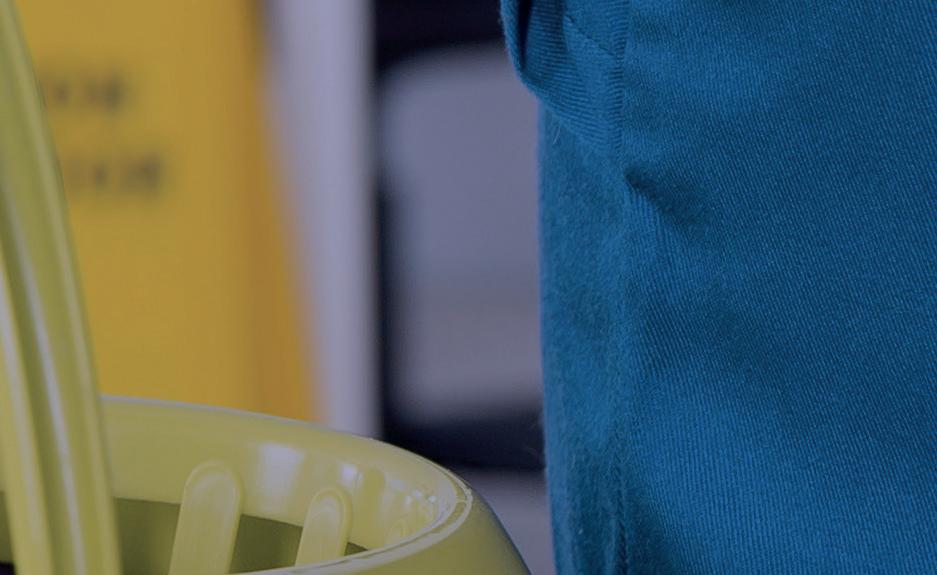


















With so many traditional luminaires still using outdated light sources, now, more than ever, is the perfect time to upgrade existing luminaires to LED. Yes, it really is possible! Unthinkable just a short time ago, we are engaging in circular lighting solutions that are now embraced by many in the lighting community. Benefiting the environment by creating less waste to landfill, less to recycle, and more products for reuse. Don’t fall behind on the change, lead the thought process about how we reuse lighting. Following the UK Government’s decision to phase out the most significant lighting products that use too much energy or contain mercury, why not join us and be part of the positive change with The Regen Initiative. www.theregeninitiative.com +44 3300 880 420 Join us on the journey > enquiries@theregeninitiative.com
HIDDEN FIGURES
Sara Bean talks to Mark Tyson, Head of Property Operations at LGIM Real Assets on how the real estate industry can address a health and wellbeing gap amongst the UK’s hidden workers


Facilities management and corporate real estate could be said to represent a microcosm of society. On the one hand it provides workplaces and amenities to knowledge workers employed by multimillion-pound institutions. However, this requires the deployment of cleaners, maintenance and security sta , many of whom may be struggling to cope with low wages and unsociable hours.
In an e ort to delve deeper into this disparity Legal & General commissioned a piece of research in partnership with charity Tavistock Relationships to uncover health inequalities in businesses across the UK.
The final report, Working Well: Delivering Better Outcomes for Hidden Workers based on quantitative and qualitative analysis
of those working in a range of di erent sectors - predominantly in cleaning and housekeeping, catering and securityreveals a variety of factors a ecting physical and mental health:

More than half of respondents worked nine hours a day, and a third 11 hours or more a day, which had a direct impact on mental and physical health and on their relationships with partners, children, and their wider families and communities.
Many workers do not receive pay if they attend a hospital, GP or other health appointment. Fear of losing pay or appearing weak or unreliable prevents them from asking for time o to look a er their health.
Very few respondents had accessed
counselling or advice services and were unaware of how they could access these services.

Mark Tyson, Head of Property Operations at LGIM Real Assets was part of the project team behind the report. He got involved with the Tavistock report o the back of another piece of work by Sir Michael Marmot, Director of the University College of London (UCL) Institute of Health Equity (IHE) and Professor of Epidemiology who has examined how improvements to the design and construction of towns and cities can help to address health inequalities.
He explains: “I got dra ed in for an opinion, because we’re a big landlord and employ a lot of people in those roles and I saw the opportunity to deal with something
MARCH 2023 36 FOCUS INTERVIEW
which has been on the table for a number of years.
“We’ve got a very di erent view on the people who work in our buildings since the pandemic. There have been stories of cleaners and security o icers going above and beyond. Cleaners for example kept places running, especially in essential buildings like hospitals and this increased our appreciation of those roles.
“We knew we needed to do more and the fantastic thing about L&G is that they don’t shy away from a social value topic. We felt we should interview these guys, get some real stories and address the issues. We wanted to ask, post-pandemic, ‘what more can we do to support people with their physical and mental health?’”
As the report makes clear, promoting and supporting better health and wellbeing to ensure a better quality of life among this group of workers is not just good for the workers, it is good for businesses and for society as a whole. Employers and crucially, the FM sector has the means to make a di erence and given the impact of the pandemic and the cost of living crisis has more of a moral responsibility than ever to act as advocates for change.

Says Tyson: “We can’t keep looking the other way from the people within these roles. All the data says to us it’s a tough life and health outcomes are not optimal. You’ve also got this squeezed middle tier, including shi supervisors and cleaning managers that seem to get le out in this conversation. Is it acceptable they get just 10p more than a cleaner?”
LEGAL & GENERAL’S COMMITMENTS
Following the results of the report and via consultation with its supply chain partners and a review of its existing arrangements, Legal & General has committed to the following changes:

Introduction of sick pay policies, without
waiting days (currently three days until Statutory Sick Pay starts) and at same level as standard pay
All workers to have access to virtual healthcare services (including GP appointments), using appropriate IT equipment to conduct the appointment in a quiet, private space
Death in service benefit as standard
L&G has also committed that by the end of 2023, more than 90 per cent (by value) of its supply chain, that’s over 500 directly managed real estate assets will be compliant with the new policies, and by 2024 it will have achieved 100 per cent compliance.
Tyson appreciates that in practice such initiatives require some fresh thinking.
He said “It’s up to the people setting these contracts to change the rules. It leads to di icult conversations where you’ve one rule for one customer, so ultimately the more customers agree to do this the better. Ten years ago, people didn’t want to procure on Real Living Wage and now it’s embedded, which is what we’ve got to move onto with benefits.
“It’s quite challenging for the industry as it’s all very well wanting to o er sick pay but it’s a real challenge in shi work to get cover, which is why a lot of this is not about the money, it’s about how we structurally support a shi worker in going to the doctor and how we help companies plan for these things.
“In the FM sector, the customers have to do more. Yes, they’re buying a service and the terms and conditions are within the law, but a lot of these organisations don’t realise that their operatives don’t get sick pay. And from a cleaning supplier viewpoint, they don’t want to lose the work so it’s a two-way street.
“But there is a point when you appreciate, ‘these are key people to
my organisation’ which is why it’s incumbent to the customer to say, ‘this is a minimum standard for me now, so I want you all at the same bar which includes, death in service benefits, sick pay and access to some kind of 24/7 healthcare’. When that becomes the minimum, the bigger employers are then starting to change the market, so it becomes best practice.”
There are also clear benefits to organisations, as despite the cost of living crisis, compared to the last recession, vacancies are much harder to fill and service suppliers are less confident they can replace a role.
Says Tyson: “We’ve got to ensure sustainable employment, as otherwise there is a risk of losing people, which is why the Real Living Wage leaders have
MARCH 2023 37 FMJ.CO.UK INTERVIEW FOCUS
As the report makes clear, promoting and supporting better health and wellbeing to ensure a better quality of life among this group of workers is not just good for the workers, it is good for businesses and for society as a whole.”
seen such an upli in the last few years. What this has done though is make for a lot more competition across sectors in filling entry level roles and that is where the benefit package really comes into it as people are much more aware of the wrap around aspects of employment, not just pay.”

HOPE AND DREAMS
One of the most poignant parts of the report were answers to the question on hopes and dreams. Many wanted to access opportunities to study but didn’t feel confident about requesting study days. Others were worried about moving into other roles in case they were less secure.
Says Tyson: “We see people coming into a job and getting stuck in the same role for 10 years. While companies will bring up EAP programmes and opportunities for training, many operatives won’t use them as they don’t want to upset their contract managers.
“We need to have more conversations about basic level of training, including improving language skills for those for whom English is a second language. Another issue for many was insomnia, partly to do with shi s, as they may work as many hours as they can and combine this with caring responsibilities. It almost becomes a badge of honour this lack of sleep but it’s a mental health issue, as sleep is so important to your long-term health.”
All the data says to us it’s a tough life and
health outcomes are not optimal, but Tyson explains: “There is also an education gap as there is a worry that if we give people access to 24/7 healthcare, they’re worried they’ll get taxed in their pay packet. These guys have been o the radar for so many years there is a distrust brewing and we need to reassure them there is no hidden agenda.”
L&G is now in working through details of the implementation process, and as Tyson explains while the vast majority of the supply chain appreciates what is being done, it isn’t easy for them as the sta concerned might be working for di erent customers who aren’t implementing these changes.
He says: “What I’m pleased about is that it’s not stopping us but making us think harder about becoming more inclusive, and some of these companies are using it as ammunition to go back to their customers and say ‘this is what L&G are doing, would you like to o er the same thing to your sta ?’ which I think is the natural evolution.
“The big part of this is in lobbying procurement professionals to help create a fair playing field. We’ve done a lot of ours through negotiation – so everyone prices in the same way but I’m aware that these are individual companies with their own policies and procedures and we’re impinging on that by saying that we want to enhance that, which is not comfortable for
everyone.”
Across the UK L&G estate, they will have impacted approximately 2,000 families by the end of 2023, but the next step is to convince the real estate industry to help drive this change, engage with supply chains and implement similar standards across its workforce.
Says Tyson: “Businesses can be part of the solution and improve the social conditions that a ect health and health equity; in conditions of work and employment; in goods and services; and in the impact they can have on wider society and the environment. While the impact on contract prices is relatively minimal at two per cent, the new policies will significantly improve the quality of hidden workers lives.”
NEXT STEPS
FMs on both the client and service provider side are well placed to make a di erence believes Tyson: “On the client side, just because they work for a di erent company doesn’t mean they can’t ask the questions on [hidden worker’s’] conditions. Speak to the people direct instead of assuming you have to go through the contract manager because it’s their business. And if you’re a supplier, you’ve got to raise it to customers in the right way and say this is the gap and these are the benefits we’d like to o er, including access to adequate washrooms, end of route facilities or foodservices.”
In the coming months, Tyson will continue the connection with Tavistock and the UCL in keeping the regional health providers involved. He is also having some “behind the scenes” conversations with major FM providers to talk about their challenges. He aims to forge wider coalitions with property companies in establishing new standards and help create a standard, rather than a policy process which might be le to management discretion.
“It’s down to the FM and procurement community to determine how we set these new standards,” he explains. “I want to get our FM partners excited so they’re saying this is the minimum now and then I want to create a toolkit which I’m hoping to launch round May/June, which any company can utilise to help change a worker’s employment contract.”
“No one wants to trouble the supplier if they’ve got labour issues, but if they can explain to us what’s going on, they can buy into it and believe in it. It is important to start somewhere as we move to address the gap we have identified, and to continue to stress our intent around health inequality in the UK. We might need more research on the impact of some of these changes, but it’s quite a logical approach to addressing health inequality.”
MARCH 2023 38 FOCUS INTERVIEW
Businesses can be part of the solution and improve the social conditions that a ect health and health equity; in conditions of work and employment; in goods and services; and in the impact they can have on wider society and the environment.
16-18
MAY 2023
|
EXCEL LONDON
Fuelling FM leaders to shape a smarter, faster, more agile and sustainable future of the workplace.
Connect face-to-face with the entire facilities management supply chain and network with global FM leaders and suppliers. Discover the latest innovations in smart buildings, ESG, legislation and more.



The networking opportunities are great…I have been amazed by the amount of technology and modernisation, there’s always so much to do and see.
Visitor Services Manager, City of London
www.facilitiesshow.com
SAFEGUARDING SYSTEMS




In recent years, technologically driven solutions have been introduced to meet changing access demands. Some of these were required by the pandemic; others are the result of increasingly stringent fire safety requirements driven by legislation in response to incidents such as the Grenfell tragedy. They all create additional considerations for facilities managers.
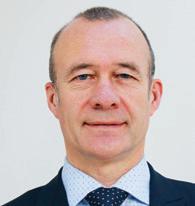
Access control systems are an increasingly ‘future-proof’ means of safeguarding sta , visitors, stock and infrastructure, including vital IT systems. They play a vital role in enhancing security for varying types of facilities, including o ices, storage areas, generating plants and the like.


Access control is no longer limited to standalone methods such as reception area turnstiles and door entry control devices. New opportunities are available to holistically integrate with other systems including IP-enabled CCTV surveillance cameras, automatic number plate recognition, so ware analytics and visitor management procedures. These provide an ability to increase both the functionality of access control management and its operational e ectiveness.
ADAPTING TO DEMANDS
The challenging circumstances imposed by the COVID-19 pandemic in Spring 2020 demanded security measures be freshly assessed and, where necessary, strengthened and redesigned with smarter access control systems. Innovations introduced at the time were designed to help address the detection of COVID-19 symptoms, with contactless access control being deployed to reduce COVID transmission risk, helping FMs to meet their duty of care responsibilities where applicable.
One example of these innovative technological solutions is CCTV-based thermal temperature monitoring. Designed to help identify individuals’ abnormal temperature, it provides real-time alerts to security sta . Access points including door release and turnstile controls can be interfaced with it to provide automatic access or barring of individuals.
Such systems and procedures aren’t fool proof, but at the time o ered a practical and realistic response to these new risks. They readily demonstrated the adaptability and ingenuity of system providers and how the

security of facilities can be enhanced by these solutions.
The reopening of stadia across the UK for attended sporting and other events, following the easing of COVID-19 pandemic restrictions on visiting fans, shone a spotlight on the operational importance of access control systems and procedures at these venues. Security breaches at Wembley Stadium ahead of the postponed UEFA Euro 2020 final in July 2021 provided a pointed reminder that arrangements to ensure the safety of those attending events are paramount.
This incident followed an infringement at Manchester United FC’s Old Tra ord ground two months earlier, when more than 100 fans broke into the stadium, invading the pitch and other areas including the players’ tunnel. This focused attention on appropriate stadia security measures including perimeter access control systems and related sta ing measures.
Technologies can be adapted to o er both physical security and fire safety protection. A prime example is the interfacing of electronic visitor management systems with appropriate access control solutions. This
MARCH 2023 40 FOCUS SECURITY
Matthew Holliday, Director of Approval Schemes at the National Security Inspectorate explains how access control systems have evolved to meet today’s demands, with a revised code of practice that provides valuable reassurance
serves the dual functions of access control and real-time registers being available for roll call verification to account for persons immediately post-incident, should there be a facilities site evacuation.
This type of measure may be identified in a periodic mandatory life safety fire risk assessment, required for commercial and other sites (FMJ, April 2021). Legally responsible ‘Duty Holders’ – who can be anyone with control and/or oversight of a premises – in a wide spectrum of nondomestic premises are tasked with ensuring these assessments are carried out and their findings implemented in full.
This may require the implementation of fire safety protections including fire detection, extinguishing and alarm systems, and emergency evacuation procedures involving the automatic release of access control equipment to facilitate entry and exit.
RISK ASSESSMENT/THREAT DETERMINATION

Specifying appropriate access control measures is best guided by a competently performed on-site risk assessment and threat determination. Carefully defining needs will ensure these measures are both fit for purpose and, importantly, userfriendly. Those using the systems daily need to appreciate their e ectiveness. Otherwise, the operational value of measures within these systems may be under-utilised or bypassed altogether, negating their e ectiveness and potentially compromising the safety of those on-site.
Risk assessment also assists in the identification of site-specific access control needs, including the location of access points to be secured/monitored and any requirements for remote monitoring. It is factored into design, along with the risk classification of access points, which can vary e.g. inside/outside working hours, during daylight/hours of darkness, at weekends, or during other open/closed periods.
OPERATIONAL EVOLUTION
Responding to evolving standards, NSI published an update to its NCP 109 Code of Practice for access control systems in June 2021. This revised Code draws on the Equality Act 2010, British Standard BS 7273-4 for fire protection (activation of release mechanisms for doors) and BS 7671 for electrical installations – all of which are central to safe and well-designed systems. Facilities managers choosing system providers which comply with the revised Code can benefit from assurance the access



control system design will reflect their specific user needs, usability and operating requirements. The latest Issue 3 of NCP 109 embraces new technologies and methods. It covers threat assessment, the determination of higher exposure points, expected people flows, means of escape in the event of a fire or security incident, and assessment of the most suitable type of recognition technology.
The updated Code now references BS EN 60839, which classifies each access point (door, hardware and access components) based on a risk assessment. Additionally, it defines access functions that should be included based on risk levels. For example, for higher risk access points, anti-pass back, door forced alarms and door held open alarms – including the remote notification of emergency release operation.

















In practical terms access control systems can be used to protect the main entry point into a facility and other access ways into each building it houses. These can include those used e.g. for daily deliveries, as well as entry points to storage facilities and sta administration/o ice areas.
Protection can be a ected through measures ranging from pin-pad door locks through to card-operated electro-magnetic release mechanisms. This enables staonly areas to be secured internally, whilst ensuring the safety of sta from external threats and managing the arrival of visitors through a centralised and controlled point.
DATA MANAGEMENT
Access control record-keeping and data security are essential functions for FMs to consider within any site security management ‘envelope’. Typically, ‘log-ins’ and permissions are a point of risk. Fail-safe system controls and procedures can ensure recognition log-ins are up to date, with permissions for sta and contractors given access being added and withdrawn/ deleted in a timely fashion – simple yet essential risk management. Access control systems store personal data that must be held securely, adhering to data protection including General Data Protection Regulation (GDPR) requirements – applicable since 25th May 2018.
Regulation (GDPR) May










The successful operation of appropriate, cost e icient and operationally e ective access control systems is built on clear collaboration between users, specifiers and installers. Facilities managers can use the latest NSI Code of Practice as a reassuring means of verifying their providers are specifying and installing to the latest standards and best practice, with their competency underlined by independent approval.
By these means, FMs also optimise their aim of ensuring that access control measures over the sites they manage will be capable of adequately meeting future operational challenges and associated risks.

MARCH 2023 41 FMJ.CO.UK SECURITY FOCUS
for higher risk access points,
Specifying appropriate access control measures is best guided by a competently performed on-site risk assessment and threat determination. Carefully defining needs will ensure these measures are both fit for purpose and, importantly, user-friendly.”
ZERO TRUST STRATEGY
John Michael, CEO, iStorage considers the dangerous new ‘golden age’ of ransomware and the role of Zero Trust IT architecture to help neutralise its impact


a Zero Trust approach – building a framework whereby no entity which interacts with your organisation earns any implicit trust. Every device, user, platform, tool or vendor must clearly demonstrate its security credentials, particularly as liability for data breaches is highly unlikely to be passed on to third parties. Employees must be trained to understand this, and a workplace culture must be built around cyber hygiene and resilience.

However, even savvy employees can slip up in a tired moment. Hackers with enough insider knowledge may be able to gather su icient information to infiltrate a network regardless of an organisation’s policies.
The path of digital transformation, accelerated by the unique requirements of the COVID-19 pandemic, has led to untold e iciencies and revolutionary connectivity – but it has also ushered in an era of incredible threat. New, more devious ransomware puts data at more risk than ever, and the rise of remote and hybrid working means criminals now have a vast number of new avenues through which it can be deployed. Analysts are calling this the ‘golden age of ransomware’ –and it’s time for businesses to fight back.
Put simply, ransomware works, with 46 per cent of those hit with a ransomware attack paying the ransom, at an average of over US$800,000. Ransomware is no longer something reserved for the lone ranger or hacking collective: the money behind it means it’s an increasingly professional criminal endeavour.
Any prospective hacker, from business rival to international power, can now access Ransomware-as-aService (RaaS), which sees ransomware authors o ering clients o -the-shelf malware variants, expertise from the
cybercrime community and databases full of online credentials. Criminals are also getting bolder, moving from simply locking down data to also stealing and threatening to share it – known as double extortion – or even making ransom demands to a business’ thirdparty clients, called triple extortion. A modern attack could cause serious reputational and regulatory damage as well as an average of 20 days of business downtime, equating to a significant financial loss.
THE HUMAN ELEMENT
Ransomware’s rise has much to do with the vast growth in networkconnected hardware and so ware.
The Internet of Things (IoT) is likely to grow to over 22 billion devices by 2024, any one of which – particularly if not patched – could act as a gateway to an improperly secured network. The speed at which IT departments were forced to roll out remote access systems during the pandemic, o en via common third-party tools or hastily compiled bespoke applications, le many inadvertent loopholes. And the subsequent sea change to commonplace home and hybrid




working means employee hardware now routinely runs on insecure home networks, and o en over public wi-fi in places like co ee shops.
VPNs are a target, shoulder-surfing passwords is a real threat, and a single lost or unattended laptop could be enough for a hacker to gain the credentials to launch an attack.
While Zero-day attacks, which exploit platform vulnerabilities known only to hackers, are a real and present threat, they aren’t something that can be easily prepared for. Moreover, phishing – a common method of network infiltration – has become ever more complex and devious over time. Phishers have mastered social engineering and confidence tricks to the point that two in three users open phishing emails, and a third will click the links or attachments within. Over half of those will then enter details into whatever lies at the other end –usually a fake login screen, passing their network credentials directly to the attacker.
ZERO TRUST APPROACH
Minimising the possibility of IT infrastructure attack means taking



The tactic now must be to secure the key asset of any business – its data – by implementing consistent encryption and employing a backup policy. Backups must be as protected as core data, ideally with strong encryption, and kept in triplicate online, o line, and o -site.
Key access must be protected by stringent policies. The Zero Trust philosophy is doubly important here: trusting keys to a cloud storage provider, for example, could result in the data and keys falling into the wrong hands in the event of a data centre breach. Moving encryption to a hardware module removes risk, and ensures that all moving data, from the cloud to email, can be properly protected end-to-end and rendered functionally useless as collateral for hackers. Using hardware encryption on backup drives or USB sticks further strengthens the protection in the case that the media itself is lost or stolen. It might seem like preparing for the inevitable is a little defeatist, but there may be no real technological way to stop ransomware attacks from happening, particularly with the human element so vulnerable. True security comes from physical and logical separation between keys and data: if we can render ransomware attacks useless and have a plan in place for recovery, they will end up little more than a very temporary inconvenience.

MARCH 2023 42 FOCUS DIGITAL SECURITY


















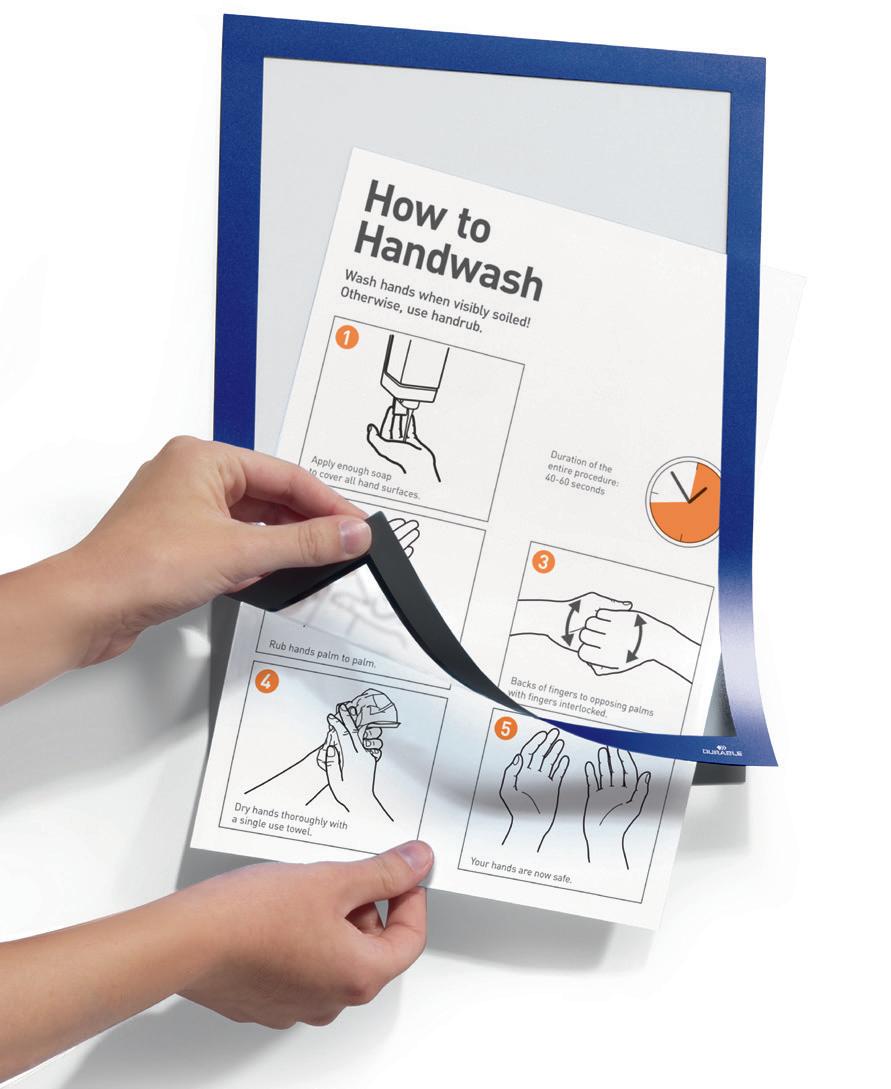




Signage made simple The professional way to display: DURAFRAME ® Scan the QR code and receive 10% off your entire order when using FMJ10 at checkout • Self Adhesive or Magnetic • Attach to any surface in seconds • Insert and change posters easily • Variety of colours and sizes available *Terms and conditions apply
PROTECTING PEOPLE
David Rowan, Sales Director at Chubb explores the growth in lone working and introduces how a new app can assist employers in keeping lone workers safe

in real-time. The operators can then connect directly to emergency services to provide the most appropriate assistance.
A check-in timer is also available on the app, allowing employees in highrisk situations to enter a duration or time of day they anticipate a particular activity, meeting or trip. When the countdown timer starts, if the check-in timer is not cancelled before the preset countdown time is reached, then an alert is automatically sent to our remote monitoring centre.
ENHANCING EMPLOYEE SAFETY
Under the Health and Safety at Work Act 1974, employers have a responsibility to protect the health, safety and welfare of their workforce. Neglecting this duty of care, even by a small margin, could lead to substantial legal implications, such as fines, imprisonment and reputational damage.
However, with an increasing number of people working remotely, safeguarding employees has become a greater challenge for employers –particularly protecting those working alone.
With more people than ever working from home or alone, sometimes in remote locations and for long periods and with increasing variations in work patterns, employers need to be assured that their people – wherever they’re located – are always safe.
LONE WORKERS
Currently, in the UK, there are an estimated eight million lone workers, making up 22 per cent of the 31.2 million working population. Lone working is defined by the Health & Safety Executive (HSE) as work carried out by people who work by themselves without close or direct supervision.
In some cases, lone workers can be working completely independently; in other scenarios, they are not physically alone, but rather in a separate location from the rest of their team. For example, a retail worker replenishing stock by themselves in a store room is classed as a lone worker. Just some of the other examples include, security guards, warehouse operatives, social workers, cleaners, engineers out in the field, and facilities managers. Employees who cannot be seen or heard by a colleague are classed as lone workers.

MANAGING RISK
In the workplace, all employees are exposed to risks, however, working alone makes lone workers more vulnerable to harm as they face risks alone. The main types of risk are accidents or emergencies carrying out a job, sudden illness, and physical violence from members of the public or intruders. Alarmingly, statistics from the Crime Survey for England and Wales indicate that as many as 150 lone workers are either physically or verbally attacked every day.
Under the Management of Health and Safety at Work Regulations, employers are obligated to manage
the risks to lone workers; however, according to a recent survey of 1,300 lone workers and health and safety professionals, some employers are falling short. The survey explored how seriously employers take lone worker safety and found that 94 per cent of companies gave themselves a 10 out of 10 rating. In contrast, just 45 per cent of lone workers felt the same and 33 per cent believed other factors like deadlines and financial targets were considered more important than their safety.
INTRODUCING SAFEZONE
With 204 years of experience delivering fire safety and security solutions designed to help businesses protect their most valued assets, we understand the challenges employers face in keeping their people safe.
Recently, we launched a new lone worker app, SafeZone, designed specifically to help employers manage the safety of lone workers. Workers can swi ly raise an alert for general assistance (help), medical assistance (first aid), or an emergency using one of three buttons. When an alert is raised, the user’s location is shared with operators at Chubb’s 24/7/365 remote monitoring centre
A global biopharma company in the UK recently pilot tested SafeZone to enhance employee safety across its entire estate. Founded in 1715, the pharmaceutical giant employs some 70,000 people worldwide and has a rich pioneering history with medications spanning respiratory, oncology, antivirals and antibiotics. With multiple sites throughout the UK, the client required a solution to manage its lone worker activity. As many employees work alone in high-risk areas or confined spaces, the solution needed to visually demonstrate the location of workers in the event of an emergency and allow them to quickly request assistance. By using the app, the client was able to envisage how it could integrate with its varied environments. In particular, the client was impressed with the check-in timer and how it performed in its plant rooms.
Following the trial, the client opted to roll out an enterprise package that complements the size and structure of the business, allowing the client to manage its people on multiple sites more e iciently through a commandand-control platform.
All alerts raised through the enterprise platform are responded to by the client’s security teams on-site and benefit from our remote monitoring expertise, providing ultimate reassurance for the personal safety of their most important asset –their people.
FOCUS HEALTH AND SAFETY
MARCH 2023 44
SWITCH ON, MEASURE, AND GO
Testo launches all-new range of compact HVAC measuring instruments

The right measuring instrument for every application: Introducing the new compact handheld measuring instruments from Testo. Delivering precise results wherever you need them – fast, flexible, user-friendly and connected to smartphones and tablets.
Not enough time in the day, endless to-do lists and time-consuming tasks: These are the moments when engineers can depend on the new compact measuring instruments from Testo. Measurement values are determined and displayed quickly via the user-friendly testo Smart App. Not only does the App ensure all measurement menus are available, it also allows a practical second screen function, measured value storage, analysis and documentation in the smart assistant at any time.
Air conditioning and ventilation systems

Smooth and energy-e icient operation of air conditioning and ventilation systems can only be ensured by regular measurements of the relevant parameters. With the new compact measuring instruments testo 417, testo 416 and testo 425, flow and volume flow measurement in ventilation ducts, at air inlets and outlets and when adjusting balanced residential ventilation is easier than ever.
More comfort indoors
We spend almost 90% of our time indoors every day. Indoor air quality and comfort are therefore essential for minimising health risks and ensuring performance in the workplace. Thanks to the new compact measuring instruments testo 535, testo 545 and testo 625, CO2, illuminance, temperature, and humidity are controlled quickly, easily and precisely, ensuring a healthy indoor climate that promotes performance.
Pressure measurement simple and compact
The two new di erential pressure measuring instruments testo 512-1 and testo 512-2 can be used to measure low and high pressures quickly and precisely, when checking heating systems for example. The all-new testo 512 manometers o er users a reliable tool for pressure measurement in industrial applications or for checking filters and Pitot tube measurement on air conditioning and ventilation systems.
Versatile and precise measurement of temperature
Temperature is the most universally measured value when it comes to control of heating, cooling or ventilation systems, industrial equipment or in a laboratory and food environment. With the new temperature measuring instruments testo 922,
www.testo.com

testo 925 and testo 110 (HACCP-compliant) and the large selection of probes (TE Type K, NTC, Pt100), even extremely high and low temperatures can be measured precisely, quickly, and easily in almost any medium. With the optional TopSafe, the instruments are protected against dust and water according to IP65.
Testo Smart App
The testo Smart App provides support for all measurements, with intuitive measurement menus for all HVAC applications, fast configuration, tabular and graphical display of measured values, second screen function and uncomplicated documentation. The App can be downloaded free of charge from the App store and is regularly updated.
ESSITY AND SODEXO CO-SPONSOR SECOND SUCCESSFUL INFECTION PREVENTION SOCIETY CONFERENCE
Informative, superb and brilliant – these were just a few of the adjectives used to describe the second IPS Environment, Cleaning and Decontamination conference co-sponsored by Essity’s global leading professional hygiene brand Tork and Sodexo Health & Care.

This face-to-face educational conference was aimed at healthcare practitioners and fronted by IPS President and ECD Lead Lisa Butcher and focused on fresh topics introduced by experts. Key speakers included IPC & sustainability specialist Heidi Barnard who examined the industry’s path to net zero, highlighting the growing number of successful reusable products on the market such as sharps containers.
She also highlighted the ongoing quest to develop high quality, reusable PPE equipment claiming that tomorrow’s purchasing model would be value-based rather than focusing on value over cost.
The pros and cons of building new hospitals with single patient rooms were then weighed up by Dr David Jenkins, Consultant Medical Microbiologist at the University Hospitals of Leicester NHS Trust. He evidenced that these provided protection against
healthcare-associated infections while acknowledging the potential as a psychological barrier for patients. But he added that single- room hospitals were di icult to sta , expensive to build and required more water outlets but he concluded that hospital design needed to be flexible to mirror the unpredictable nature of healthcare.
contact time and using one wipe on one surface and in one direction.
Infection Consultant at the Oxford University Hospitals NHS Trust Dr Nicole Stoesser then explained how biofilms can readily spread along sink pipework and considered whether heating devices, waterless facilities or chemical or biological treatments could be solutions to the problem.
Professor Cath Noakes, Deputy Director Leeds Institute for Fluid Dynamics School of Civil Engineering University of Leeds, covered the topic of air quality. She talked through solutions such as UV technology, ionisers, plasma devices and photocatalytic oxidation, adding that further research into such systems was required because most data currently originates from lab studies.
Consultant Practitioner in Infection Prevention at Hywel Dda University Health Board Tracey Gauci took to the floor to share her healthcare hygiene tips. She explained the di erence between cleaning and disinfection and discussed the role of bleach in healthcare cleaning, ending with an “S-shape hack” that involved cleaning from top to bottom; moving from clean to dirty, remembering the importance of
www.tork.co.uk
Finally, Consultant Clinical Scientist Mark Garvey from University Hospital Birmingham closed the event by summing up the speakers’ contributions and discussing whether or not infection control practices can hinder productivity.
“It was really informative and the entire event was absolutely brilliant,” said IPS President and ECD Lead Lisa Butcher.
MONTH IN FM MARCH 2023 45 FMJ.CO.UK
info@testo.co.uk
SNICKERS WORKWEAR’S NEW STRETCH TROUSERS WORK AS HARD AS YOU DO
Made from the longlasting, innovative Sorona® performance fabric and CORDURA® for long-lasting comfort, functionality and sustainability.
It’s the innovative design and sustainable fabric technology in the newest Work Trousers for men and women from Snickers Workwear that really set them apart from other brands.
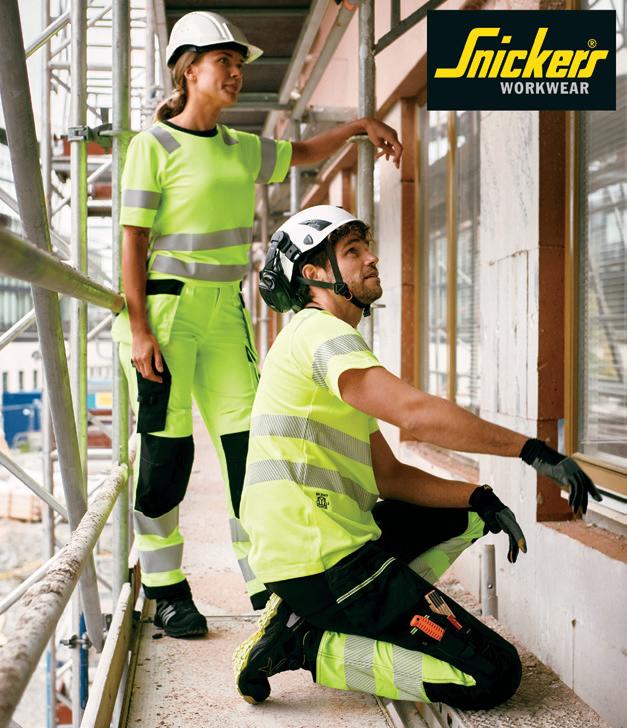
Delivering comfort and safety features when they’re needed most, these slim-fit Trousers are Class 1 and Class 2 certified and made from innovative Sorona® sustainable performance fibre.
They also come with the patented KneeGuard® system and CORDURA® reinforcement in the knees and pockets.
Sorona® delivers both environmental benefits and long-lasting performance. This recyclable, bio-based fibre o ers exceptional so ness and stretchability for maximum comfort as well as excellent durability to help extend the lifetime of a garment. It’s also quick-drying, breathable and so to the touch for optimal performance that will last through wash a er wash, retaining shape, comfort and protection levels throughout the life of the garments.
www.snickersworkwear.co.uk
sales@hultaforsgroup.co.uk
REDUCED COLD WATER DISCOMFORT
Most facilities managers know that significant energy savings can be made by fitting a low flow device such as the Waterblade to your taps to wash your hands with.
What is less well known is that a further saving can be made by using cooler water, as reducing the volume of water used, and spreading it out over your hands as the Waterblade does, reduces cold water discomfort.

Waterblade is WRAS approved and UK manufactured in premises with ISO 9001 and 14001. We believe it o ers the best low flow handwashing performance there is. Typically giving a payback period of under 3 months. It can be quickly retro fitted to most mixer taps.

TRUVOX INTERNATIONAL LAUNCHES NEW VALET DUAL MOTOR UPRIGHT
The Valet Dual Motor Upright vacuum cleaner from Truvox International sets a new standard for highperformance cleaning in the commercial sector.

Truvox International has launched its new Valet Dual Motor Upright highperformance commercial upright vacuum cleaner. The robust machine is ideal for use in healthcare, education, hotels and o ice facilities.
“We are delighted to launch our new easy-to-use Valet Dual Motor Upright (VDMU) vacuum cleaner which sets a new standard for high performance cleaning in the commercial sector,” says Truvox International Executive Director, Gordon McVean.
The VDMU features 3-stage filtration, including a HEPA 12 filter, that provides a high filtration of all particles of 0.3 microns and larger. The self-adjusting brush head instantly adjusts to the carpet pile height, allowing the brush head to float evenly over the carpet pile surfaces, while the removable extendable wand is ideal for vacuuming upholstery, stairs and hard to reach areas.
The flexible Valet Dual Motor Upright can be used in three positions: upright when using the accessories; a standard working position; and low for when cleaning under furniture. The VDMU features on-board cleaning tools including a crevice tool and brush for convenience and ease of use. In addition, the dust bag is very easy to change and the cable wrap o ers tidy storage.
https://www.truvox.com/
GROWING SUSTAINABILITY WITH JANGRO AT THE CLEANING SHOW
Jangro, the largest network of independent janitorial and cleaning distributors in the UK and Ireland, will once again be welcoming visitors to its stand (B25), at The Cleaning Show 2023 (14-16 March 2023 at ExCeL, London). Here, visitors will learn about the company’s commitment to sustainability.
Infant trees will adorn the stand to launch Jangrow, a new, exciting, and innovative tree planting scheme. The aim is to gi an infant cell tree to its customers, who can then plant them in their own grounds. A er the show, the sapling trees used on the stand will be donated to the ExCeL centre to be planted around their premises.
Jangro will also give visitors a preview of its new, sustainable, brown cardboard boxes, which mark a change for Jangro branded outer cartons. These also feature new ‘RRR’ messaging, ‘Return, Reuse, Recycle’. This new service enables Jangro customers to return empty boxes if they no longer have a need for them.
Continuing the ‘green theme’, Jangro will be showcasing its award-winning ntrl collection of vegan cleaning products. All formulas are vegan and 100% biodegradable, contain zero petrochemicals, and can reduce the product’s carbon footprint by up to 85%.

Jangro’s new Cleaning & Hygiene Supplies Catalogue 2023/24 will be unveiled at the show too.
www.jangro.net




MONTH IN FM TO ADVERTISE IN MONTH IN FM PLEASE CONTACT DANNY.GRANGE@KPMMEDIA.CO.UK OR CALL 01322 476811 MARCH 2023 46
www.thewaterblade.com nigel@thewaterblade.com +44(0)7956 247392
01484 854788
WHY IS BIN SIGNAGE IMPORTANT?
Leafield Environmental, an award-winning manufacturer and designer of recycling and litter bins understand the importance of clear and consistent bin signage to increase user participation and reduce contaminated waste. That’s why, they have provided some guidance on how e ective bin signage can help launch new bins successfully.
Visual Graphics
Without consistent and clear recycling labels and graphics, users can become confused and disengaged with the new recycling or litter bins. Therefore, it is crucial that the correct waste stream is colour coded and labelled so the user can easily dispose their waste accurately.
Clear Recycling Labels
Leafield use [Waste and Resources Action Programme (WRAP) - https://wrap.org.uk/ taking-action/citizen-behaviour-change/recyclenow/campaign-assets/material-stream-icons] compliant recycling labels on their bins as standard which are colour coded in the di erent waste streams.
Bespoke Labelling
Leafield can produce bespoke recycling labels upon customer request. This usually happens when an organisation would like the new bins to match their existing recycling or litter bins or to comply to their company brand guidelines. Leafield can also produce bi-lingual recycling labels upon customer request.
Poster Signage kits
Leafield bins feature a poster signage kit as standard on most ranges. The posters are usually A3 or A4 sizes and free WRAP compliant posters can be downloaded [https://leafieldrecycle. com/resources/]. Alternatively, the customer can design a poster to fit into the frame. The posters are usually featured above the bin or on the side panels of the bin.
Leafield recommends that whilst featuring recycling labels and posters to their bins is key to the success of installing new bins, additional communication to employees and users about the new recycling scheme would strengthen engagement and participation.

NILFISK CONTINUES TO ENHANCE FLOORCARE CLEANING SOLUTIONS THROUGH INNOVATION

Nilfisk, the cleaning equipment manufacturer will be showcasing several of its industry leading floorcare machines, in addition to releasing three new floor scrubbers to the UK market this year, and you can see a preview of them at the Cleaning Show. Nilfisk products experts will be on stand C5 to give all the details on the latest product introductions, provide a deep-dive on lithium-ion battery technology and its impact on a new era of floorcare.
Nilfisk SC4000 scrubber –


The all new SC4000 is a compact ride-on scrubber, with a scaled-down design and 110L tank, making it capable of easy maneuverability in narrow spaces, and able to pass through standard-sized doorways
with ease. The SC4000 was developed with contract cleaners, schools, hospitals, and smaller retail stores in mind.
Nilfisk SC370 scrubber – Introducing the compact,
www.nilfisk.com/en-gb/products/floor-cleaning
easy to operate, walk-behind scrubber dryer for cleaning of hard floor surfaces. The SC370 is highly maneuverable and user-friendly, and is designed to deliver e ortless, agile, e ective cleaning, even in congested areas and tight spaces.

Nilfisk SC 351 Lithium-ion Battery scrubber – Best in class compact size scrubber dryer sees a new generation with lithium-ion battery, delivering greater productivity due to the longer run times and general longer life.
To get more details or explore the floorcare range in more details then click Nilfisk Floorcare Range or visit us at The Cleaning Show, Stand C5.
MONTH IN FM MARCH 2023 47 FMJ.CO.UK
https://leafieldrecycle.com/resources/ recycle@leafieldenv.com 01225 816541
www.nilfisk.com
CLIVET SMART LIVING: INTEGRATED COMFORT AND ENERGY MANAGEMENT SYSTEM FOR RESIDENTIAL APPLICATIONS


Clivet’s Digital Business Unit has developed a whole series of Digital Solutions, to optimise comfort and consumption related to air conditioning in di erent sectors from residential to commercial and industrial.
For the residential sector, the proposed solution is Clivet Smart Living, an integrated comfort and energy management system for residential applications with the following elements:
Heat pump with ecological refrigerant R32 for heating, cooling and domestic hot water production, with an extensive range from hybrid heat pumps such as Sphera EVO 2.0 EASYHybrid, to full electric heat pumps, recognised as KlimaHaus Quality Products, available in cased, uncased, split and monobloc versions.
ELFOFresh EVO air renewal and purification system with active thermodynamic recovery and electronic filtration.
Clivet Sinergy electrical energy storage that can be connected to photovoltaic panels to power the system dedicated to comfort and supply energy to all domestic utilities for a 100% renewable energy home and life.
Smart thermostats positioned in each zone/room.
ELFORoom2 room terminals, silent and compact with an elegant design, appealing to every architect.
Silent and compact room terminals with elegant design ELFORoom2 and MOOD EUROVENT certified.
CONTROL4 NRG centralised management and control system, allowing full synergy management of all connected elements to maximise comfort and e iciency.
Clivet Eye app for convenient remote management of the entire system via smart-phone.
https://www.clivet.com
OURFRESH-E™ FROM P-WAVE® ENHANCES EVERY VENUE

Leading fragrance and air-freshening specialist P-Wave® has launched ourfresh-e™, a new professional 30-day plug-in air freshener for larger spaces.

“Ourfresh-e delivers premium pleasant fragrances which enhance the ambience of any venue, helping to reassure consumers that premises are clean, fresh, hygienic and safe,” says P-Wave Sales and Marketing Manager Mark Wintle.
Improving air quality and freshness throughout premises
Ourfresh-e is a powered 30-day air-freshening solution for larger spaces and contains 3-5 times more fragrance than supermarket purchased plug-ins. Easy to use and install, the rotating plug works in any 3-prong outlet. The intensity button allows you to select the right setting, and there are no screws or tapes needed to install. Easy to refill, ourfresh-e o ers superior 30-day performance with consistent fragrance release from day 1 to day 30. The high-speed fan improves air quality by drawing air through the charcoal filter, helping to clean the air for a better experience.
Sustainable air-freshening
solutions
Wintle adds: “The refills for ourfresh-e are 100% recyclable, so are much kinder to the environment than aerosol-based products – and have very low VOC’s, contain no propellants or solvents, just fragrance. No batteries are required, and the environmentally friendly refills contain the EcoPure additive for faster biodegradation, should they not be recycled.”
https://p-wave.co.uk

VYCEL 4 BACKPACK ELECTROSTATIC SPRAYER VYCEL 4 FROM RAWLINS DELIVERS A NEW STANDARD IN VIRUS PROTECTION
Leading UK cleaning equipment supplier Rawlins had launched Vycel 4, an easy-to-use and lightweight backpack electrostatic sprayer, that when paired with a water-based antibacterial solution, delivers a world-beating approach to pathogen elimination, giving them nowhere to hide.
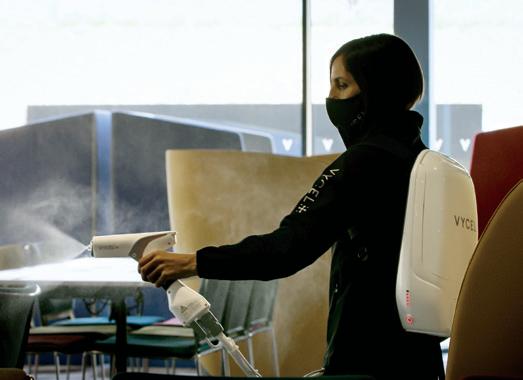
“If you're a business owner, it is important to prioritise the health and safety of your employees and customers,” says Rawlins Managing Director Werner du Plessis. ”Our fogging solutions, such as Vycel 4, can benefit your organisation by helping you maintain a healthy and safe environment.
“Vycel 4 is intended to provide the best spray coverage to weight ratio for electrostatic sprayers, therefore saving time and money. From healthcare to gyms and schools, using Vycel creates the opportunity to properly sanitise and maintain a healthy and safe environment. And another benefit is that with all cleaning and hygiene services now being a front-of-house, rather than behind the scenes activity, Vycel 4 also looks great and highly professional.
“Vycel 4 uses micro water particles in the form of fog to provide wider coverage with deeper penetration than traditional sprays. We also recommend using Vycel 4 in conjunction with GermErase, a scientifically proven disinfectant that has been shown to destroy a wide range of germs, bacteria, pathogens, and viruses.”
Compact and straightforward to use, Vycel 4 is up to 65% quicker than traditional trigger bottles and uses 75% less chemical solution.
www.rawlins.co.uk
KINGSPAN LAUNCHES PIPE INSULATION CARBON CALCULATOR
Kingspan Technical Insulation has introduced a new carbon calculator, helping consultants to understand how pipe insulation specifications can impact whole life carbon emissions and operating costs associated with heat losses from pipework systems.

The Kingspan Kooltherm Pipe Insulation Carbon Calculator covers a range of system designs, pipe materials and diameters and operating parameters. Pipe insulation thicknesses can be easily set using the relevant tables within BS 5422 or enhanced thicknesses, revealing how changes to the insulation will a ect expected system heat losses, the cost of these losses and the capital cost of the insulation. This powerful tool can help consultants to make more informed decisions about pipe insulation specification, and understand how choices may impact the payback period for the insulation, both in terms of cost and carbon emissions.
Kingspan Technical Insulation’s experienced team can work with users to help develop a custom calculation which is tailored to your project. They can then work with you to explore the di erent pipe insulation options to identify an optimal specification.
To discuss getting a carbon calculation for your project, contact: pipecarboncalculator@kingspan.com

MONTH IN FM TO ADVERTISE IN MONTH IN FM PLEASE CONTACT DANNY.GRANGE@KPMMEDIA.CO.UK OR CALL 01322 476811 MARCH 2023 48
pipecarboncalculator@kingspan.com (0)1457 890 400 info@kingspaninsulation.co.uk
‘HOTEL-STYLE’ AMENITIES ARE CHANGING THE SHAPE OF THE OFFICE AND FM TEAMS HAVE TO BE AWARE
By James Massey, Managing Director of Facilities Management, MRI

Software
The survey results show that the younger the employee, the more likely they are to want these types of amenities, which could make a huge di erence in the recruitment and retention of skilled people moving forward:
Over a third (34 per cent) of respondents see amenities as crucial factors a er the nature of the job itself
An additional 19 per cent said they are “critical” to deciding whether to work at a job or not
A further 11 per cent said, “If an employer doesn’t have a lot of these things, I’m not interested”.
Changing the o ice for a changing workforce
There is no question that hybrid working is here to stay, but flexible work alone doesn’t guarantee that people will come into the o ice. And attracting people – especially younger employees –back into the o ice remains critical. A er all, it is where face-to-face collaboration, information-sharing, learning, mentoring and the development of the right company culture flourish.
Companies are looking to shape workplaces that attract and retain the very best people – and it is especially important for young talent. A global Deloitte survey in 2022 showed that some 46 per cent of Gen Zers and 45 per cent of Millennials reported feeling burned out due to their work environment.
The steps businesses are taking to entice people into the o ice need to be on the radar of Facilities Managers, as they impact how FM teams manage, maintain, clean and secure o ices. We are now seeing ‘hotel-style’ amenities and user-friendly work tools emerging as a vital part of the employer playbook for winning over sta , according to recent research commissioned by MRI So ware.
Amenities sought by the modern workforce
The MRI research showed that 64 per cent of people now look for amenities that make for a much more eclectic workplace. A survey of 6,000+ consumers in the US, UK and Australia unveiled a new tier of compelling ‘hotel-style’ amenities that mark out the revamped workspaces. Survey respondents reported looking for:
Facilities and areas for socialising (28 per cent)
Onsite café/cafeteria/restaurant (28 per cent)
Outside space/green space (26 per cent)
A gym (21 per cent)
Changing and shower facilities (15 per cent)
And bicycle storage (13 per cent)
Another emerging tier included technology-enabled amenities that boost e iciency and collaboration in the hybrid working world:
Hotdesking, bookable meeting rooms, and break-out meeting spaces (24 per cent)
Smart conferencing tools (15 per cent)

And 24/7 access (19 per cent)
Having an o ice where people want to work remains crucial, even in the age of hybrid working. The research revealed that only 15 per cent of employees want to work at home every day – with younger people wanting to work in the o ice more o en than older workers. But it is clear the o ice will look much di erent than before the pandemic. As a result, FM teams need to consider their approach to cleaning, maintenance, and security.
PropTech tools, such as booking systems, sensors, desk screens and mobile apps, help companies to understand and manage the individual o ice user experience. Similarly, landlords can use these types of technologies to reshape workspaces to meet the changing needs of their commercial tenants. These technologies lead to a very di erent structure and feel for each o ice, and FM teams need to evolve to reflect and deal with these changes.
FM teams themselves are adopting more digital technologies that signal when equipment needs to be maintained or upgraded – or even simply when a shared space or screen needs to be cleaned for the next user. Sensor- and data-informed actions are increasingly replacing fixed-calendar approaches to maintenance and upgrades. Overall, using digital tools and smart data to understand the needs of operators and occupiers better enables facilities managers to make smart decisions and excel in the face of changing requirements.
If you want to find out more about how you could take advantage of the latest FM trends to improve the e iciencies in your organisation and make more informed decisions, contact MRI So ware.
www.mriso ware.com/uk/ EMEASales@mriso ware.com
MONTH IN FM MARCH 2023 49 FMJ.CO.UK
IS YOUR LIFT READY FOR THE ANALOGUE TO DIGITAL SWITCHOVER?

The digital switchover of telephone lines in the UK is happening now. By 2025, Openreach will have phased out all copper analogue telephone lines in favour of optical fibre networks.
What the digital switchover means for you
If you are a building manager you may already be aware of the need to change phone lines in your building, but may not have realised that your li s will be a ected by the Public Switch Telephone Network (PSTN) switch o .
Some li s in buildings have an alarm, enabling passengers to communicate in an emergency situation. With the analogue to digital switchover, li owners must now manage the transition of their emergency alarms from analogue phone lines to other digital alternatives.
The digital switchover will not happen overnight and work is being completed in phases across the UK.
However, being prepared for this, understanding
the implication for your li , and choosing the right solution for your li ahead of time is essential to keep your li s compliant and your passengers safe.
HVAC CONSULTANT – THE VALUE ADD CONSULTANCY


Our customers are our highest priority, whether you require service validation with your current service provider, contract renewal support, condition reporting & life cycle profiling, energy performance & reduction programs, refurbishment, upgrades, or support in replacing your HVAC system, we are committed to ensuring we deliver service excellence.
Barry Coe, Founder & Director, has spent over 30 years’ working within the HVAC industry for major HVAC manufacturers, he brings indispensable knowledge balanced with a personal approach when it comes to supporting the customer through the services provided.
At Appletree Aircon Services, we o er full support whether it’s our retainer service allowing the customer to have daily support for their HVAC equipment or o ering full strategic consultancy support for specific projects, we are here to support you. www.appletreeaircon.co.uk

About GSM, the ‘digital’ phone line alternative
One option as part of the preparation for the digital switchover is GSM. GSM telephony provides a reliable and cost-e ective digital solution for most existing li s. Without the need for physical phone lines and installations, a GSM module can be easily installed and battery-backed to provide a failsafe in the event of a power outage.
SIM management from the experts
Stannah’s new portfolio of digital services includes a managed SIM service, which covers the cost of calls, line rentals and 24/7 connectivity monitoring, o ering peace of mind to li owners, improved product safety for users and reduced risk for the owner.
For more information, visit the Stannah website or speak to your local service branch.
KNIGHTSBRIDGE HERALDS A BUMPER YEAR WITH NEW 2023 CATALOGUE
Knightsbridge has published the 25th Anniversary Edition of its catalogue. The handy A5-sized, full colour publication is packed with over 3,000 items, including over 400 new products.

New high design accessories reflect evolving aesthetics, with Matt Black, Anthracite and Smoked Bronze finishes on electrical accessories and lighting now up there with more traditional items such as white and chrome, both polished and brushed.
Latest lighting introductions include SpektroLED, the 40-inone configurable downlighter that now comes in fixed and tilt versions; and the Torlan range of non-corrosive LED battens with variants ideal for residential, commercial, industrial, agricultural and other demanding environments. Further recent developments include a collection of recessed and surface-mounted downlights designed for light commercial, hospitality and high-end residential applications.
To get your copy simply visit https://www.mlaccessories.co.uk/cataloguerequest or give Knightsbridge a call on 01582 887760.
www.mlaccessories.co.uk
01582 887760
MONTH IN FM TO ADVERTISE IN MONTH IN FM PLEASE CONTACT DANNY.GRANGE@KPMMEDIA.CO.UK OR CALL 01322 476811 MARCH 2023 50
s.co.uk/connected
www.stannahli
01449 721 574 07507 664 752
barrycoe@appletreeaircon.co.uk
FM CAREERS - PEOPLE




JAMIE
MCKECHNIE
TO TAKE OVER MD ROLE AT KIER PLACES
Jamie McKechnie has been appointed as the new Managing Director of Kier’s housing maintenance and FM business, Kier Places. McKechnie, who joined Kier three years ago as Group Procurement Director will take up his new role on 3 April following the departure of Mark Whittaker who is leaving Kier to take up a new position elsewhere in the industry.
Since joining Kier, McKechnie has transformed the company’s approach to supply chain management, introduced new sustainable technologies such as Flywheel and battery storage units and played a leading role in securing Kier’s Real Living Wage accreditation.

Prior to Kier, McKechnie held a number of senior leadership roles in his 25 years in the construction industry including housing maintenance, operational delivery and procurement for organisations such as Wates and Rok.
UKGBC APPOINTS NEW CHIEF EXECUTIVE
The UK Green Building Council (UKGBC) has appointed industry trailblazer, Smith Mordak, as its incoming Chief Executive. Mordak will take on the role on 1 June 2023, with a handover from Julie Hirigoyen, who will be standing down a er over eight years at the helm.


Over six months, the Board of Trustees conducted a rigorous and extensive search process to find the right person and says Mordak brings a wealth of industry knowledge, deep technical expertise, first-hand insights as a longstanding member of UKGBC, and plenty of fresh ideas to the role, at this critical moment in time, as it continues to drive ambitious transformation across the sector.
Mordak, currently Director of Sustainability and Physics at Buro Happold is an award-winning architect, engineer, curator, and writer, working across disciplines to realise a regenerative economy and built environment. Their career has centred on creating and implementing strategies for the transition to a healthy, fair and sustainable built environment, and has included roles in architecture and engineering.
ED MORROW NAMED AS SODEXO’S MD FOR ENERGY & RESOURCES
Sodexo has appointed Ed Morrow as Managing Director of its Energy & Resources business in the UK and Ireland, which delivers catering, hospitality, welfare, facilities management services, property management and refurbishments services to over 40 onshore energy and o shore & marine client sites throughout the UK.
The appointment follows the internal move of Cunera Vlaar, who has been appointed Country Lead for Sodexo Netherlands.
Morrow joined Sodexo in 2007 as Finance Director for Energy & Resources UK & Ireland. Since then, he has held a number of senior roles in the business, including CFO Europe & Israel, Finance Director for Global O shore & Marine, and Global VP Finance for Onshore Energy and O shore & Marine.

We understand the importance of facilities management and those that work within it That’s why we place such emphasis on connecting leading FM professionals with top employers.






FACILITIES MANAGEMENT JOURNAL JOBS
w w w b u i l d r e c c o m i n f o @ b u i l d r e c c o m
F o r m o r e i n f o r m a t i o n a b o u t h o w w e c a n h e l p y o u r o r g a n i s a t i o n , p l e a s e v i s i t b u i l d r e c . c o m o r c o n t a c t t h e F a c i l i t i e s M a n a g e m e n t t e a m o n 0 2 0 3 1 7 6 4 7 9 3 Y O U R F A C I L I T I E S S E C T O R R E C R U I T M E N T P A R T N E R T O T A L F A C I L I T I E S M A N A G E M E N T | E N G I N E E R I N G | M A I N T E N A N C E
If you are looking to grow your facilities team across soft services, engineering or facilities management, our FM recruitment team have a rapidly expanding network of job seekers available for temporary, permanent or contract vacancies.
T o s e e o u r l i v e r o l e s , s c a n h e r e MARCH 2023 51 FMJ.CO.UK
CREATING HAPPINESS
David Tarbuck Group Marketing & Communications Director, Atlas on the surprising results of a happiness survey carried out amongst its sta

In all cases, the desired end result is to make customers happier. This is also the reason many employees choose FM as a career path – they take joy in helping others. In Atlas, this is essentially our purpose. But words on a page are useless without meaning.
We decided that our starting point for measuring happiness should be our own people. Naturally, we needed to understand our current position to give us a happiness baseline for the future. A survey was a good place to begin. It was the first time we have undertaken a specific happiness survey, and we didn’t want to replicate the annual style that employees expect.
In coming up with the questions, we kept the principle of happiness at the centre. Echoing the example set by Bhutan, we asked our people what made them happy and what caused them to be unhappy. It was entirely anonymous but quite particular in terms of the options and categories. People from across our company responded, whether they were full-time or part-time, site-based or o icebased. We used a simple format to drive responses and be friendly on mobile devices as well as laptops.
Every organisation has special people who make it tick. In our industry, the front-line workers come to mind first. Cleaners who make an o ice spotlessly clean and tidy every evening, ready for the next morning. Security o icers who work all hours to keep people and premises safe. Technicians who make sure that building users are warm in winter and cool in summer. There are also special people who support them, such as customer service advisors and o icebased teams who help customers with daily and urgent requirements.
During the pandemic, these individuals were still physically going into work and acting as flexibly as
LATEST JOBS ON FMJ
LEAD FOR OPERATIONAL FACILITIES MANAGEMENT
Salary: Grade 3, £54,742-£60,433 per annum
Location: Halifax
https://bit.ly/3mfCy5M
FACILITIES MANAGEMENT COORDINATOR
Salary: £28,403-£32,088 (Grade 4)
Location: Buckley or Welshpool
https://bit.ly/3y2GZ6I
FACILITIES MANAGER
Salary: £50k - 55k per year + 36 days holiday +
Location: Kensington
https://bit.ly/3YdoUgy
possible to meet clients’ ever-changing needs. Now we are in 2023 and what feels like a new environment. Today’s discussions focus on the cost of living, industrial action, changing working patterns, and sta and supply chain shortages.
In 1972, Bhutan’s King Jigme Singye Wangchuck declared that “Gross National Happiness is more important than Gross Domestic Product.” The country then began to measure the happiness of its citizens as a way of judging its success as a nation. Forty years later, Bhutan refined its Gross National Happiness Index and put forward a UN resolution, successfully adopted, which argued for a better approach to development, focused on happiness at the core.
The idea behind the index is to judge what is making people happy and understand why parts of the population are unhappy, so that public o icials can come up with plans to address the causes. Bhutan shows us something that should be plainly obvious –everyone should be able to live a happy and fulfilled life; and where people are not doing so, we should try to do something about it.
Here in the UK, the O ice for National Statistics now includes happiness on its national wellbeing dashboard. As of the last results in October 2019, only 35.4 per cent of Britons over 16 describe themselves as very happy. We have much to improve on.
CELEBRATING FM
Let’s turn to the positives and celebrate our own industry. For facilities management is a sector that is built on the very principle of “creating happiness” – indeed, that’s why Atlas adopted this as our motto. Everything we do is about enhancing the customer experience and trying to improve everyday lives. There are di erent routes to do so of course, giving rise to technology solutions, equipment innovations, and new best practice.

I want to be as open as possible about what the survey told us. The good news is that our people are generally very happy to be working for Atlas, with a headline score way above comparative figures for good engagement (o en seen as above 60 per cent in typical surveys). Our people are proud of the work they and their colleagues do. They like our culture and feel excited about the future.
CLIENT RECOGNITION
In terms of areas we need to work on, it will be no surprise to many that our people want access to new workplace innovations and more dynamic training opportunities. We are acting on this by rolling out a brand-new learning platform, which is now being road-tested by our Atlas Security business. Surprisingly, cost of living and compensation was nowhere near the top issue preventing more happiness.
What I found interesting was how happy sta feel being recognised by their own customers. This type of recognition can be more powerful than managerial or peer recognition, as it is the customers that front-line workers see most, and who customer service agents o en speak to.
In our case, we encourage Atlas employees and managers to form close relationships with them. We see creating happiness as an important part of their roles, so we give them the autonomy to do so. It is a reason they stay with us; and why we have such positive sta retention rates.
The point is this: if we as an industry can create more happiness for our people, we will inspire them to create happier workplace experiences for customers. There will be business benefits, such as higher productivity and better contract retention, but more importantly our whole community will be a happier one. Isn’t that something to aim for?
FACILITIES MANAGEMENT JOURNAL JOBS
jobs.fmj.co.uk Over 250 jobs live on site FM CAREERS - RECRUITMENT MARCH 2023 52
WISE INVESTMENT
You’ll never regret investing in knowledge and skills says Sofie Hooper, Head of Policy, IWFM
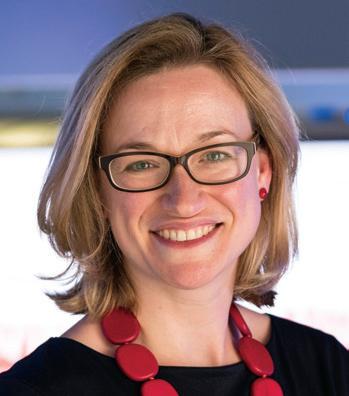
t’s all quite overwhelming, isn’t it? The climate emergency, Russia’s invasion of Ukraine, energy and living costs, Brexit, supply chain issues, the postpandemic transition, widening inequality, and more.
The world has laid on a bu et of great challenges which are culminating in a period of the worst turbulence any of us has experienced in our lifetimes.
And yet, as a workplace and facilities management professional, the power to create positive change is within your grasp. A er all, it’s when we focus on what we can control that change happens.
LIFT OTHERS AS YOU CLIMB
Research carried out by the Institute of Workplace and Facilities Management (IWFM) found that qualifications increase the likelihood of advancement in organisations, and career advancement has clear associated benefits, such as increased pay and better prospects.
However, making the most of your talent via upskilling and career progression can also yield rewards that go much further than your job title and bank balance; you can also make a di erence and play a more influential role in helping to create real change which, piece by piece, helps millions.

This is because workplace and facilities management professionals are on the front line of the
Igreatest challenges facing organisations today. Many of those challenges are also linked to trends which are impacting businesses and communities all across the world; therefore, by upskilling, expanding your knowledge, and advancing your career to increase your influence, you will play a bigger role within a professional community that’s providing solutions to challenges and creating better outcomes.
And when your personal contributions are added to those of other FMs, the vast majority of whom you will never collaborate with or even meet, the cumulative impacts of your combined best practice and innovation will spread across regions and borders, consolidating as the change society needs for a better tomorrow.
INVEST IN YOURSELF
There are so many opportunities to add value, boost performance, and help the bottom line, while also contributing to wider society. To name a few: helping to protect the environment and driving e iciencies to save on energy costs; ensuring your contracts are watertight, fair, and delivering value to local communities; enabling workplace optimisation which drives performance and results; or safeguarding and enhancing built environments to protect and improve experiences for occupants, users, and owners.
Right now, employers are enduring labour and skills shortages which, when combined with rising costs, are making it di icult to fill crucial vacancies and capability gaps.
You can be a part of their solution. You can rise up, seize the opportunities, and make a di erence. But it’s
vital to act and take steps to fully utilise what is already at our disposal: your potential.
Invest in yourself, learn, advance, fill critical skills gaps up the value chain, and make the business case for new talent to fill any gaps you leave behind as you climb the career ladder. You will help yourself, your employer, your clients, occupants, users, and many, many more in society.
BECOME THE BEST YOU CAN BE WITH IWFM
Daniel Biggs, Business Development Executive, IWFM explains the standards process.
As the professional body for workplace and facilities management, IWFM’s Professional Standards define competences at all levels and inform our world-leading professional development pathway, including our qualifications, training, membership, and CPD.
We’re here to help professionals grow and enhance their skills and knowledge, supporting them in progressing their careers, inspiring those around them, and driving organisational success.
We have short courses for professionals at all levels, including introductory, management and role-specific courses, such as procurement and strategy, and they can be delivered via face-to-face learning or live virtual training using the latest technology. Members of IWFM also benefit from receiving a discount across all our short courses as part of our many membership benefits.
We can also create bespoke courses for you to o er in-house for your teams. All of our face-to-face and live virtual courses can be individually tailored to your organisation’s needs.

Alternatively, you could acquire more knowledge and skills by studying for an IWFM qualification. Available at levels 2 to 7, they serve both those new to the industry, such as school leavers or career changers, and experts with many years of experience. They are available to be studied through our network of Recognised Centres. Study options at centres include face-to-face, while online study is available with IWFM Direct.
If you would like to discuss your options, our passionate team will help you through every step of your career and enable you to become the best you can be.
To find out more about how you can take your career further with IWFM, please visit iwfm.org.uk/prodev or email academy@iwfm.org.uk.
FM CAREERS - TRAINING MARCH 2023 53
FACILITIES MANAGEMENT JOURNAL JOBS
Sodexo partners with Youth Employment UK


Sodexo has launched Explore at Sodexo on the Youth Employment UK website with a designated employer profile that showcases early careers at the organisation. Young people can read and watch inspiring profiles of current Sodexo apprentices, as well as explore apprenticeship academies, T Level opportunities, and work experience programmes at Sodexo sites throughout the UK. Youth Employment UK an independent, not-for-profit social enterprise will assist Sodexo in connecting with young people who are looking to work for a youthfriendly employer and discover education and training opportunities.
Sodexo o ers a wide variety of apprenticeships, with over 70 available in areas such as IT and business administration, facilities management, hospitality and catering, healthcare and HR.
Searches for ‘remote jobs’ are at an all-time high in the UK
There has been a massive increase in interest in moving from in-o ice positions to those that are home-based according to an analysis of Google Trends by data Experts at Financial-world. According to experts at Financialworld, the volume of searches for ‘remote jobs’ is estimated to be 28,000 per month in the UK. Currently, 36,309 remote working jobs are listed on the Indeed job site. ONS data reveals that between September 2022 and January 2023, 16 per cent of the UK workforce still worked solely from home, while 28 per cent split their time between home and the o ice in hybrid roles.

NG Bailey opens applications to industry-leading apprenticeship scheme
As the company gears up for further growth engineering and services business, NG Bailey will be o ering apprenticeships across a number of di erent disciplines, with opportunities available in electrical, mechanical and technical specialisms. The scheme also includes a number of business-based roles, o ering multiple opportunities for people to shape their career in the construction industry.
As part of the programme NG Bailey will also be launching its new IT Services apprenticeship scheme for the first time, which will aim to train the next generation of talent to support the UK’s transition to the latest digital connectivity.
Recognised as a Top 100 Apprenticeship Employer by the Government, NG Bailey has a long history of delivering successful apprenticeship schemes, having welcomed apprentices to the company since 1934. Many of the company’s apprentices have gone on to win national and industry awards and progress into senior management positions.
Over-55s braced to work into their 70s as cost-of-living bites
Over a quarter of over-55s believe they will still be working in their 70s, with the majority lacking a financial plan for retirement, new research by My Pension Expert has revealed.

The at-retirement adviser commissioned an independent survey of 2,000 UK adults. It found that the cost-of-living crisis has significantly impacted retirement plans, with 44 per cent of over-55s in work believing it has made retirement impossible.
Over a third (37 per cent) say the current economic climate has derailed their financial plans. Over a quarter (26 per cent) think they will still be working in their 70s.
My Pension Expert’s research showed that, while Chancellor Jeremy Hunt is urging over55s to either remain in work or re-enter the workforce, for millions, they do not feel they have a choice either way. Just 35 per cent of over-55s think they will be able to retire when they want to.
The survey also revealed that many over-55s are not su iciently prepared for stopping work. Less than half (43 per cent) know how much they have saved in their pensions, and even fewer (37 per cent) have a financial plan in place for retirement.
UK four-day week pilot is a resounding success
The results of the world’s biggest ever four-day working week pilot which took place in the UK have been revealed with almost every company that took part deciding to continue with a four-day week, with no loss of pay for workers.
A report published by the think tank Autonomy and leading academics at the University of Cambridge and Boston College in the US, the results show that almost every company (92 per cent) that took part has decided to continue with the four-day week a er the pilot. Of the 61
companies that participated, at least 56 are continuing with the four-day week, with 18 saying the policy is a permanent change.
Around 2,900 employees took part in the six-month trial overall, which kicked o at the beginning of June 2022 and was run by 4 Day Week Global in partnership with Autonomy, the 4 Day Week Campaign, and researchers at University of Cambridge and Boston College.


Last month, South Cambridgeshire District Council became the first local authority to trial a four-day
week with very early results showing reduced stress levels for sta and no negative impact on service delivery.
Joe Ryle, Director of the 4 Day Week Campaign, said: “This is a major breakthrough moment for the movement towards a four-day working week.
“Across a wide variety of di erent sectors of the economy, these incredible results show that the fourday week with no loss of pay really works. Surely the time has now come to begin rolling it out across the country.”
FM CAREERS - NEWS FACILITIES MANAGEMENT JOURNAL JOBS
MARCH 2023 54




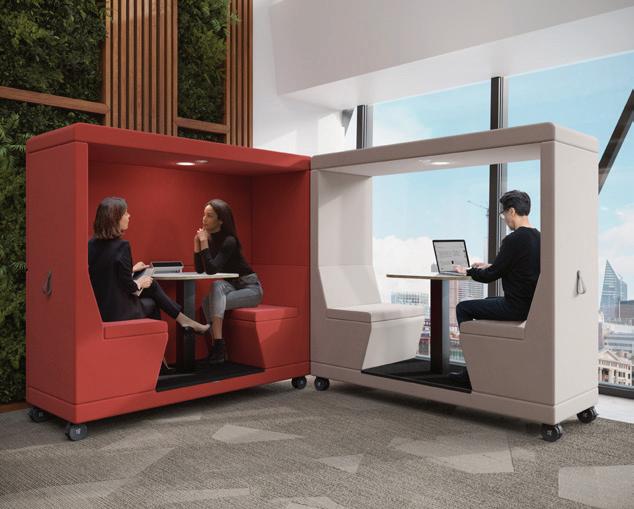
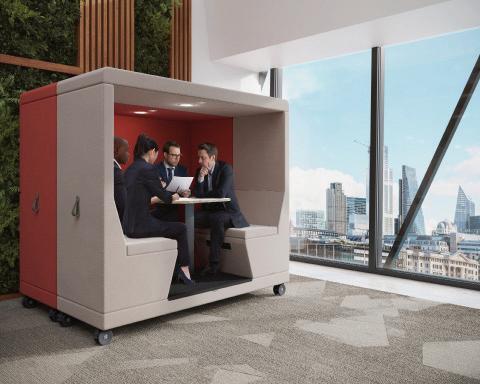






Mobile meeting pod. Keep Moving it For meetings, focus work, zoom calls Configurable for 2, 4 or 6 people Fabrics made from 100% recycled materials Warren Fitzpatrick Sales Director +44 (0)1793 575 082 www.yo-yopod.com warren@yo-yooffice.co.uk Moves easily & safely, with lockable wheels Mobile Re-configure any space, again and again Modular for meetings, focus work, zoom calls or as a room divider Multifunctional All Aboard the Yo-Yo POD®































































































































































 JOANNA GOSLING, HEAD OF PROCUREMENT, EMCOR UK
JOANNA GOSLING, HEAD OF PROCUREMENT, EMCOR UK
















 JoannaGosling
JoannaGosling


















































































































































































































































































































































































































































































































































































































































































































































































































































































































































































































































































































